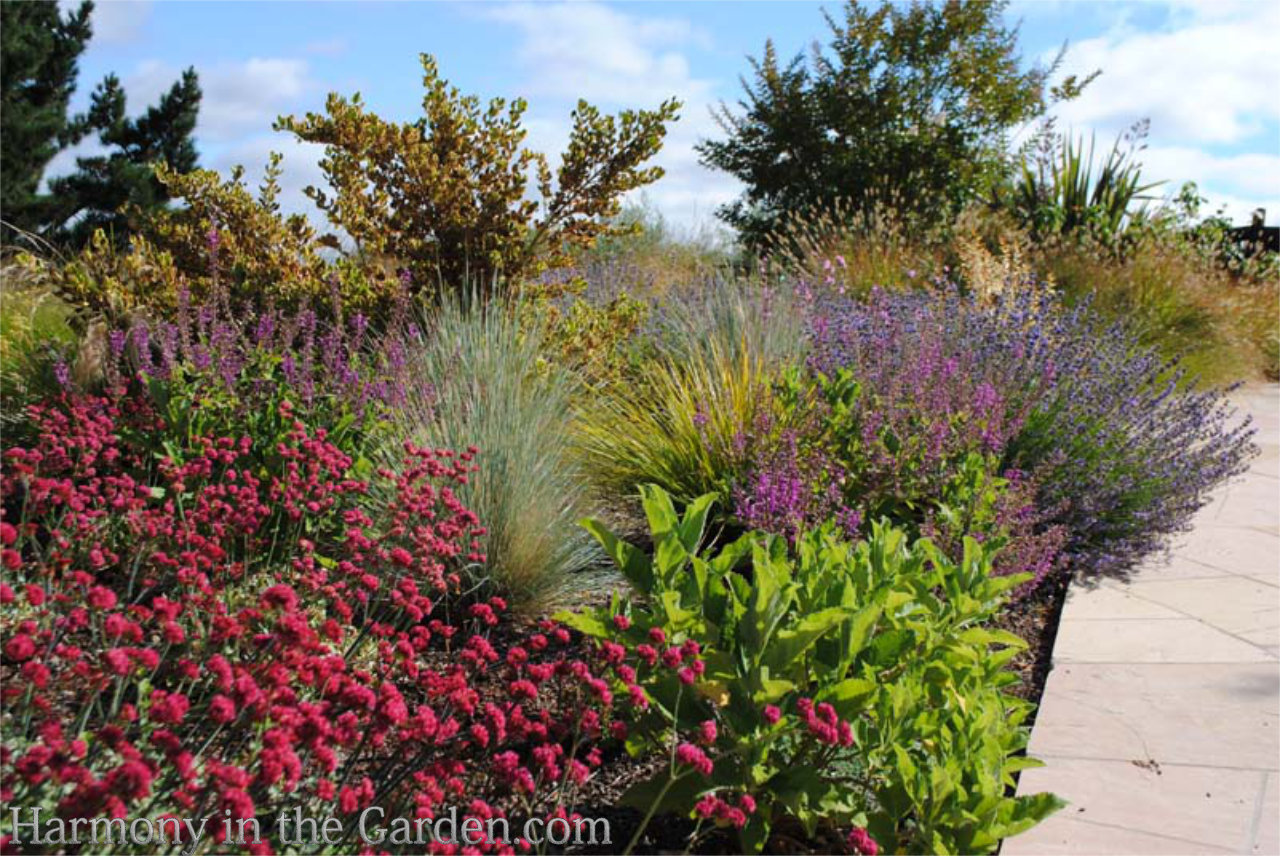
Having designed gardens throughout California for decades, I want to share with you my top 30 native plants for the garden.
These are native plants to both California and other regions of the US and are those that thrive in a garden setting (not all do!)
What makes these plants a favorite?
Most importantly, they must reliably return year after year.
Following that, they must also be a stunning addition to the garden (hopefully offering more than one season of interest) while attracting loads of pollinators.
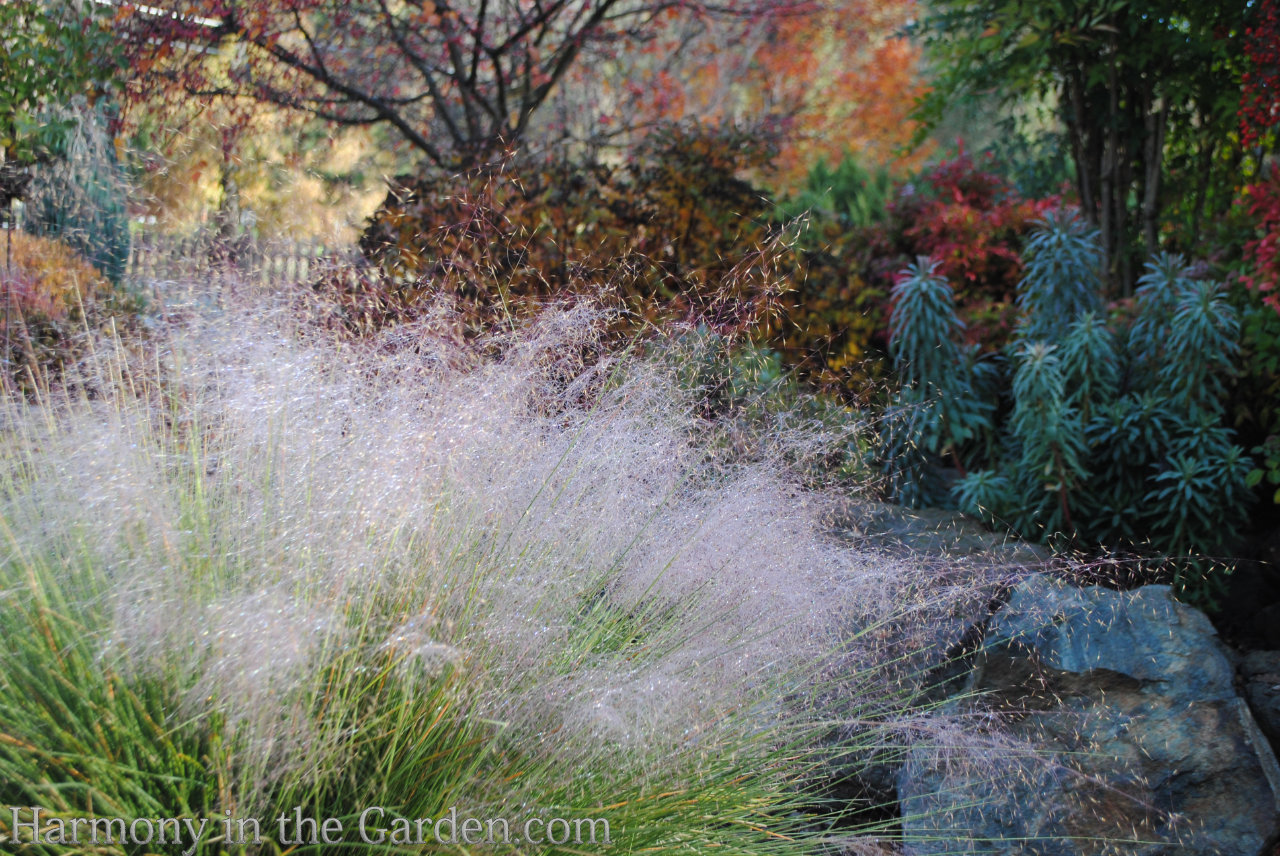
Designing with native plants is easier than you might think.
However, a common misconception I’ve noticed is that just because a plant is native, it’ll thrive in their garden easy-peasy.
This is not always the case!
The thing gardeners need to remember is native plants that thrive in the wild are often adapted to very site-specific situations.
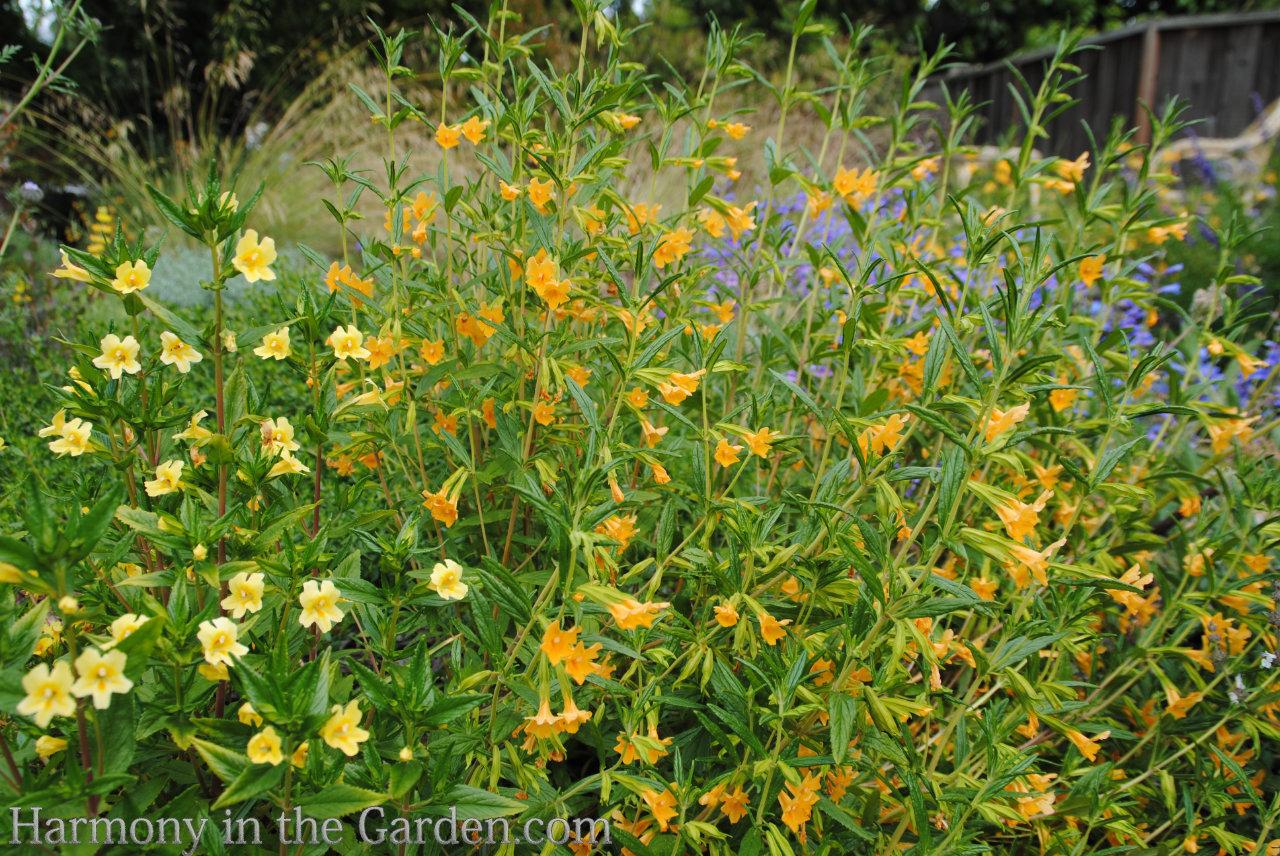
And, these specific locations usually don’t mimic typical home gardens which are often flat, heavily-amended, with ample irrigation.
This is one of the main reasons many native plants (like monkeyflower, toyon, or sulphur buckwheat) are notoriously challenging to establish in a traditional garden setting.
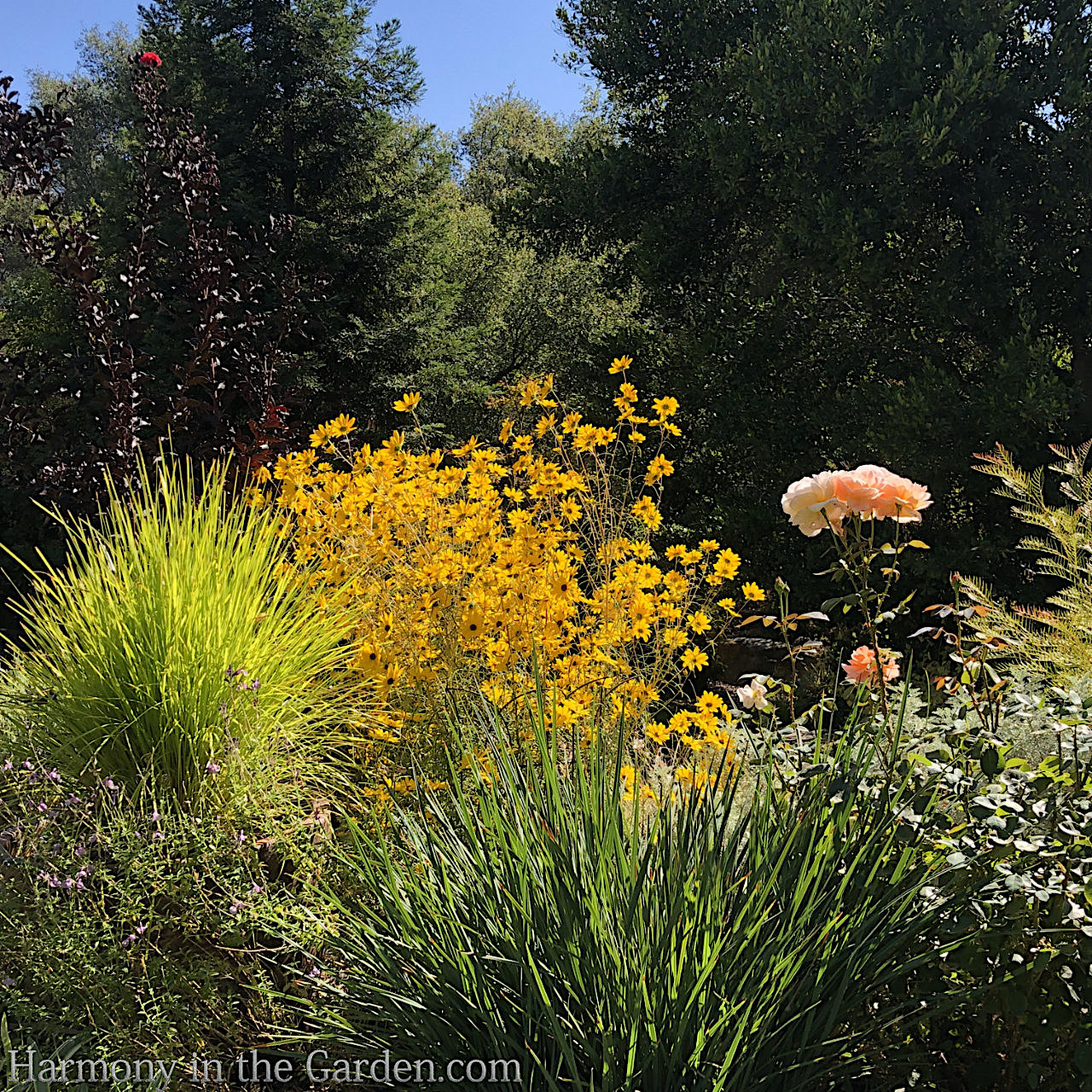
In today’s post, I’ll show you the native plants that I’ve included in my new garden (can I still call it new now that it’s going on 3-years old?) as well as other gardens I’ve designed.
These are native plants that I’ve found are easier to establish in existing gardens, happily co-existing with other low-water plants.
To make it easier to navigate, I’ve separated the native plants into categories: shrubs, perennials, and trees.
So make yourself comfortable, grab your favorite beverage, and let’s get started!
SHRUBS

Ceanothus ‘Ray Hartman’ zones 8-10
This is a super fast-growing upright variety which will eventually reach 15 feet or so.
What’s my definition of fast, you may ask? Well, I planted this one 4 years ago from a 1-gallon plant and it’s now a towering 10-feet!
Unfortunately, ceanothus varieties with larger leaves (like this one) tend to be munched by the deer.
However, because it grows so fast, if you can protect it long enough for it to grow tall and out of their reach (like I did with mine) then it’s a win!

Ceanothus ‘Carmel Creeper’ zones 8-11
This is one of my favorite fast-growing ground covers, reaching 2’ x 4’ in just a few years.
From late winter through late spring it’s covered with tons of light blue flowers. Alas, it’s another favorite of hungry deer (thanks to its oversized foliage and flowers, like this variety.)
‘Carmel Creeper’ tolerates a bit more water than other varieties, which makes it a good fit for a traditional garden setting.
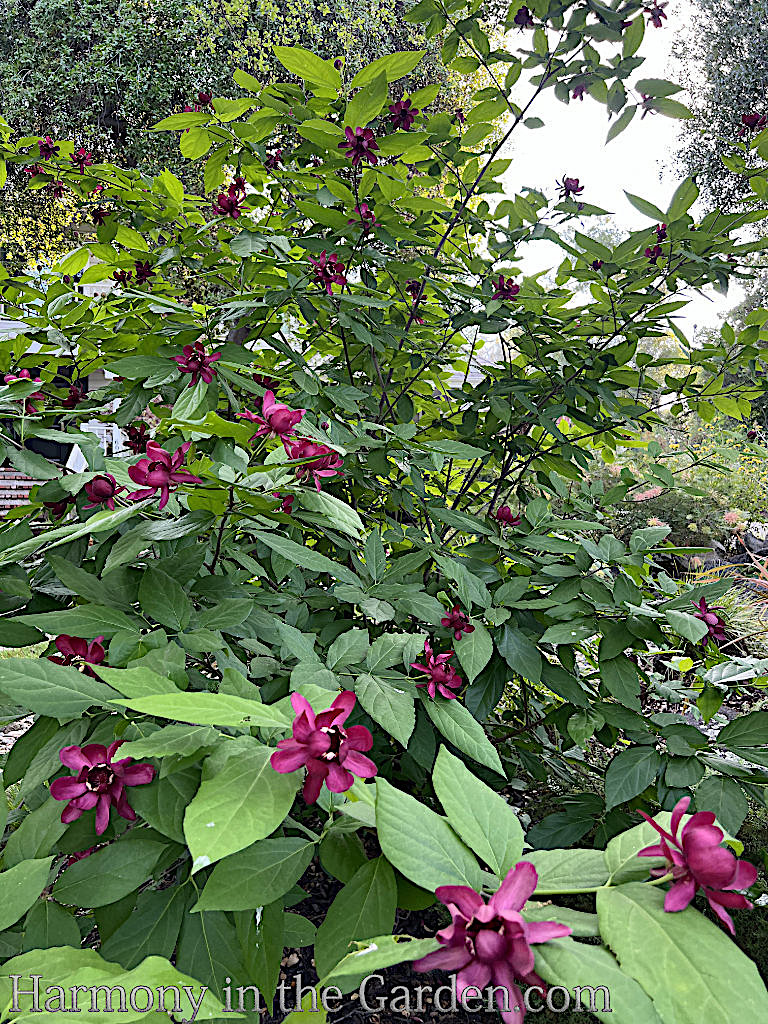
Calycanthus ‘Aphrodite’ (Carolina Spice Bush) Zones 5-9, Deer-Resistant
This variety of Carolina Spice Bush hails from the East coast, and has slightly fragrant, oversized cranberry-red flowers that re-bloom!
The crisp apple-green foliage is tough as nails, also, never wilting even during my blistering hot summers (with very little water, too!) And those fall colors!!
Four years ago, Proven Winners sent me this 4″ plant to trial in my garden and just look at it now – easily 8’x8.’
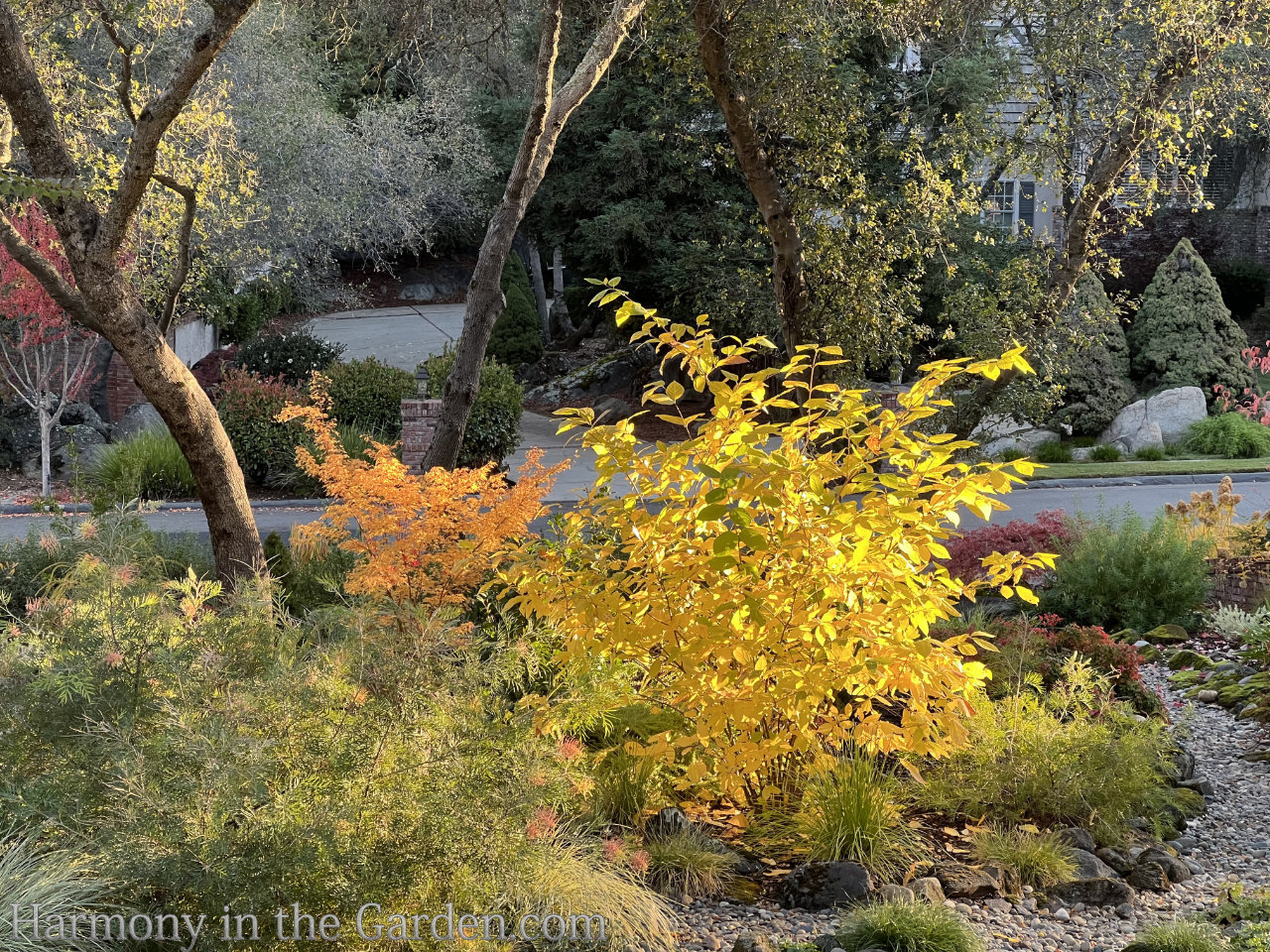
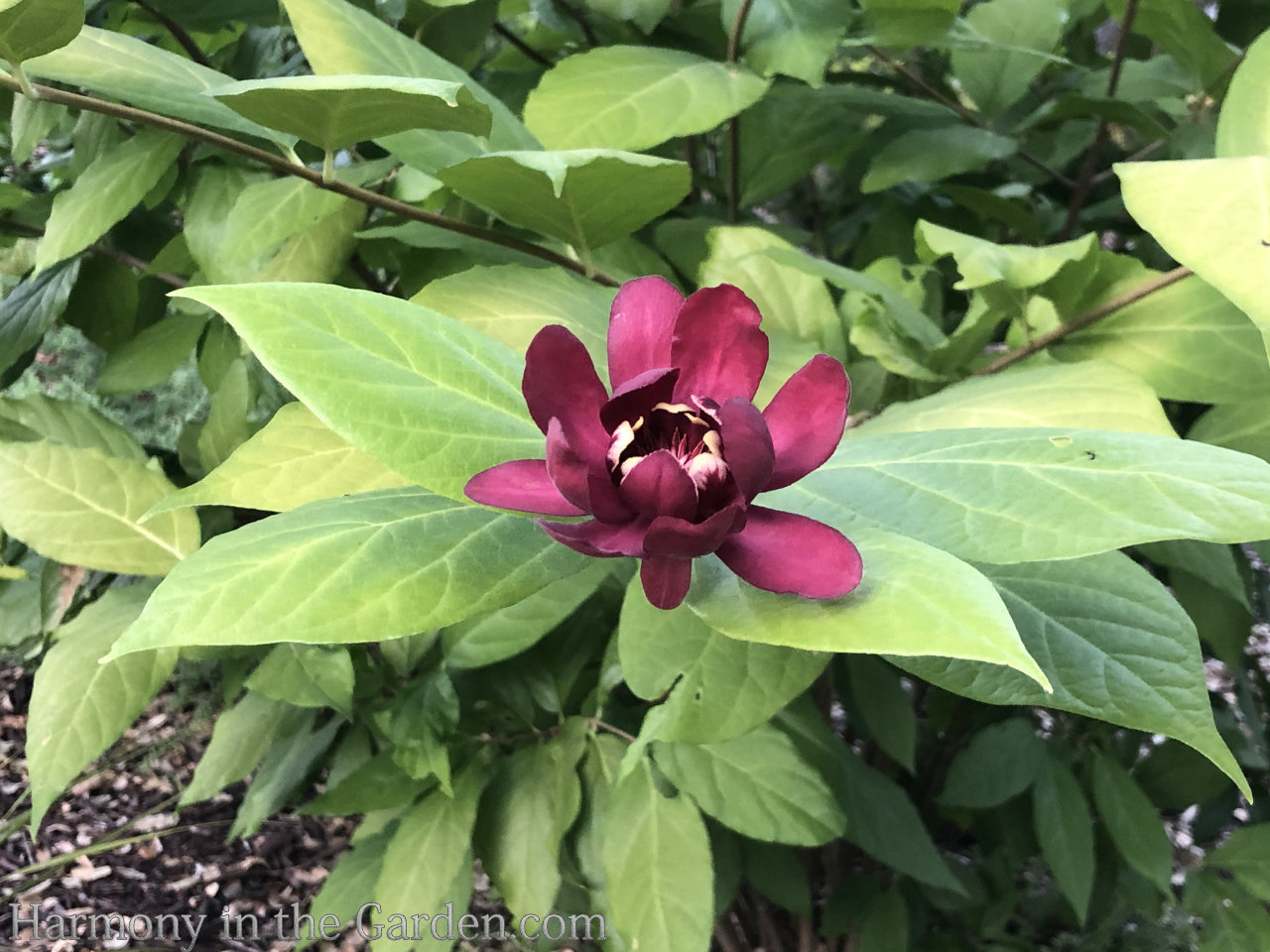
And just take a look at the flowers! They’re easily 4″ across with the most unusual dark cranberry-red color.
And as an extra surprise, they make fantastic cut flowers to bring in the house!
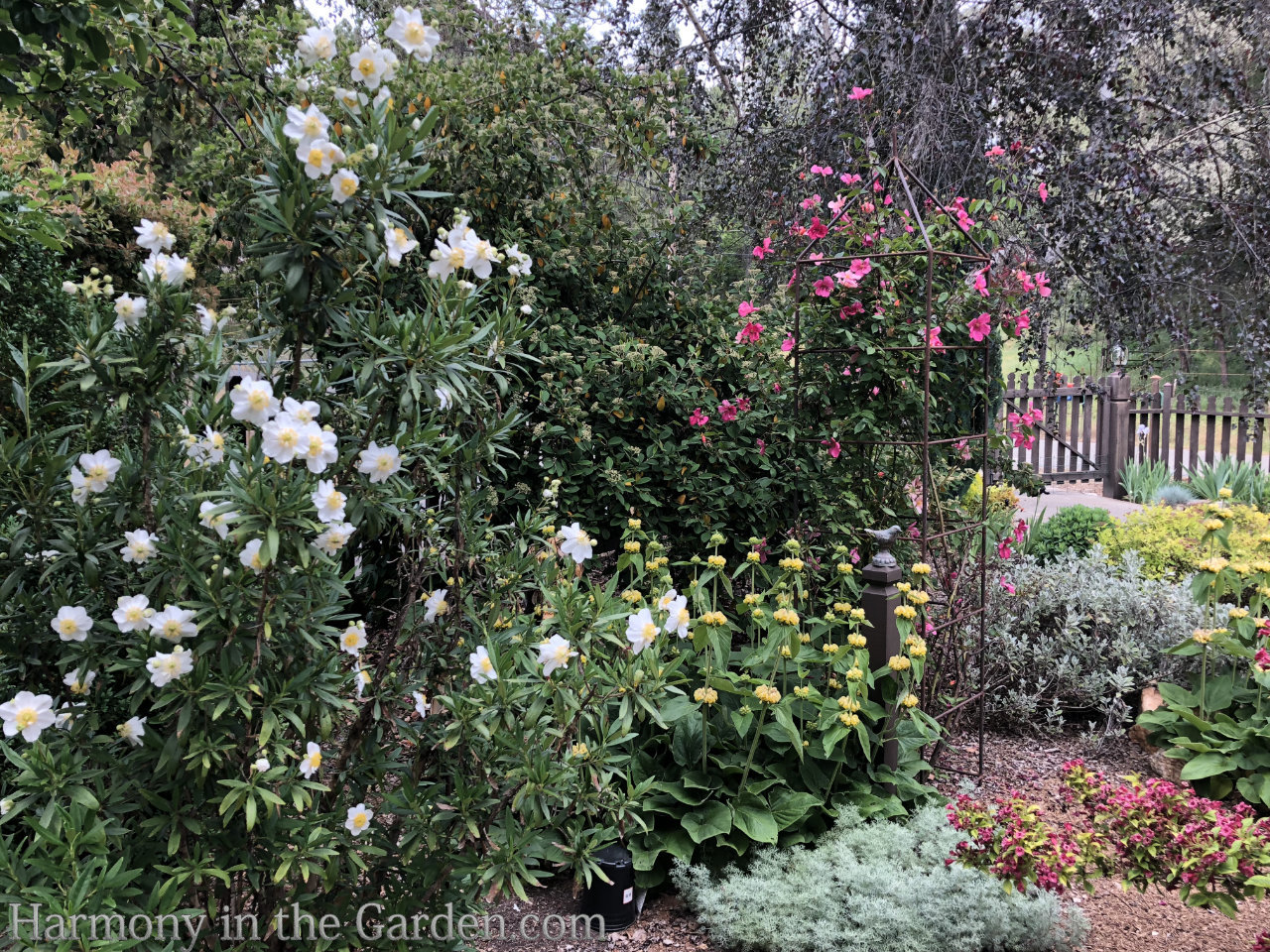
Carpenteria californica (Bush Anemone) zones 8-9, Deer-Resistant
This is one of California’s most beautiful native shrubs. It grows to 8’x5′ which makes it ideal for the back of the border.
The profuse, oversized 3” white flowers steal the show once it begins blooming in spring, and doesn’t quit until late summer.
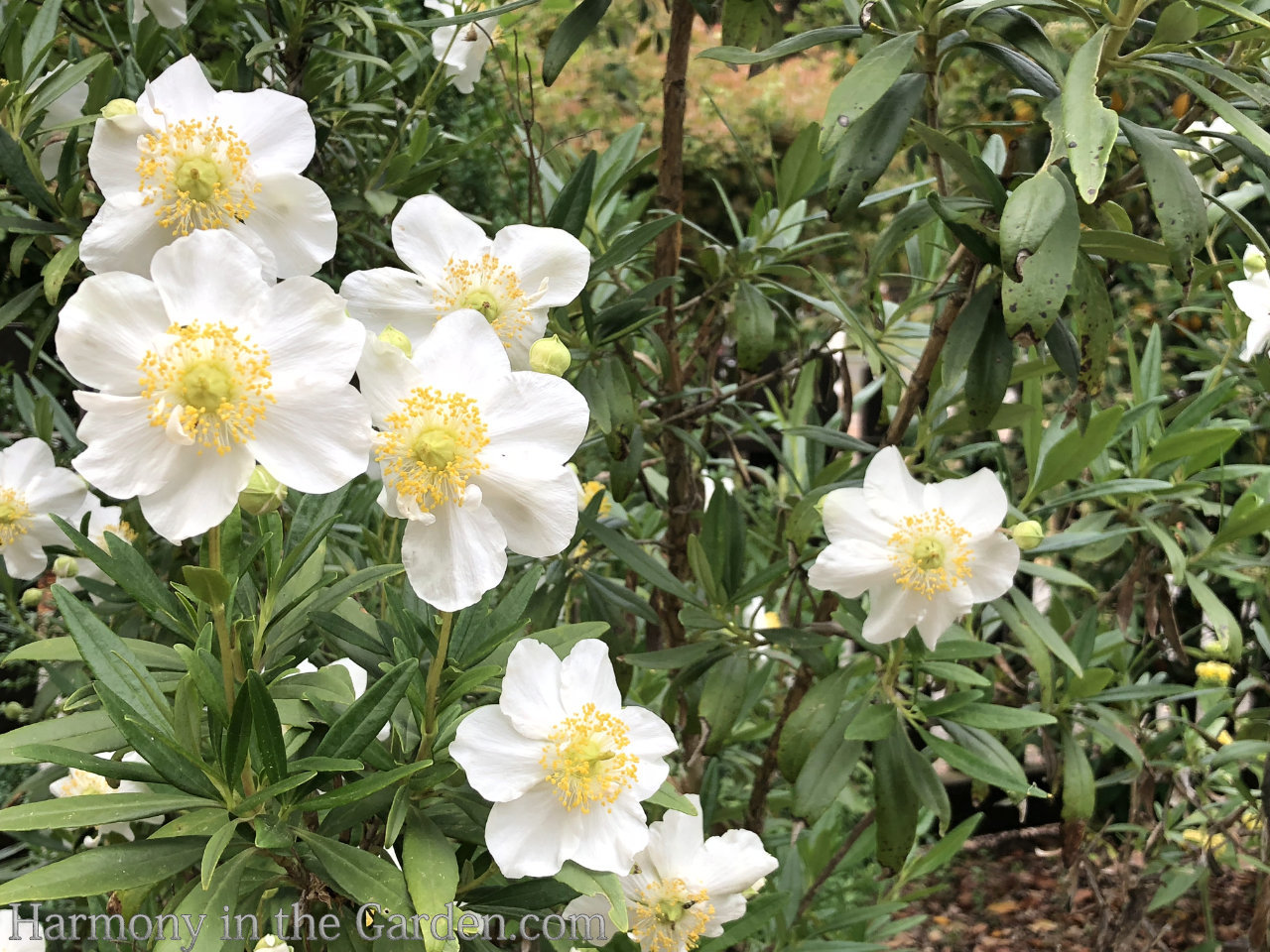
I’ve found that sometimes the old foliage can hang on a little too long, turning an unsightly yellow, so I carefully strip it away, leaving only the healthy green leaves.
Should the shrub become leggy and woody, it benefits from a somewhat hard pruning.
In fact, I’ve cut mine back by 2/3 before, resulting in a lush new plant, covered again with white flowers.
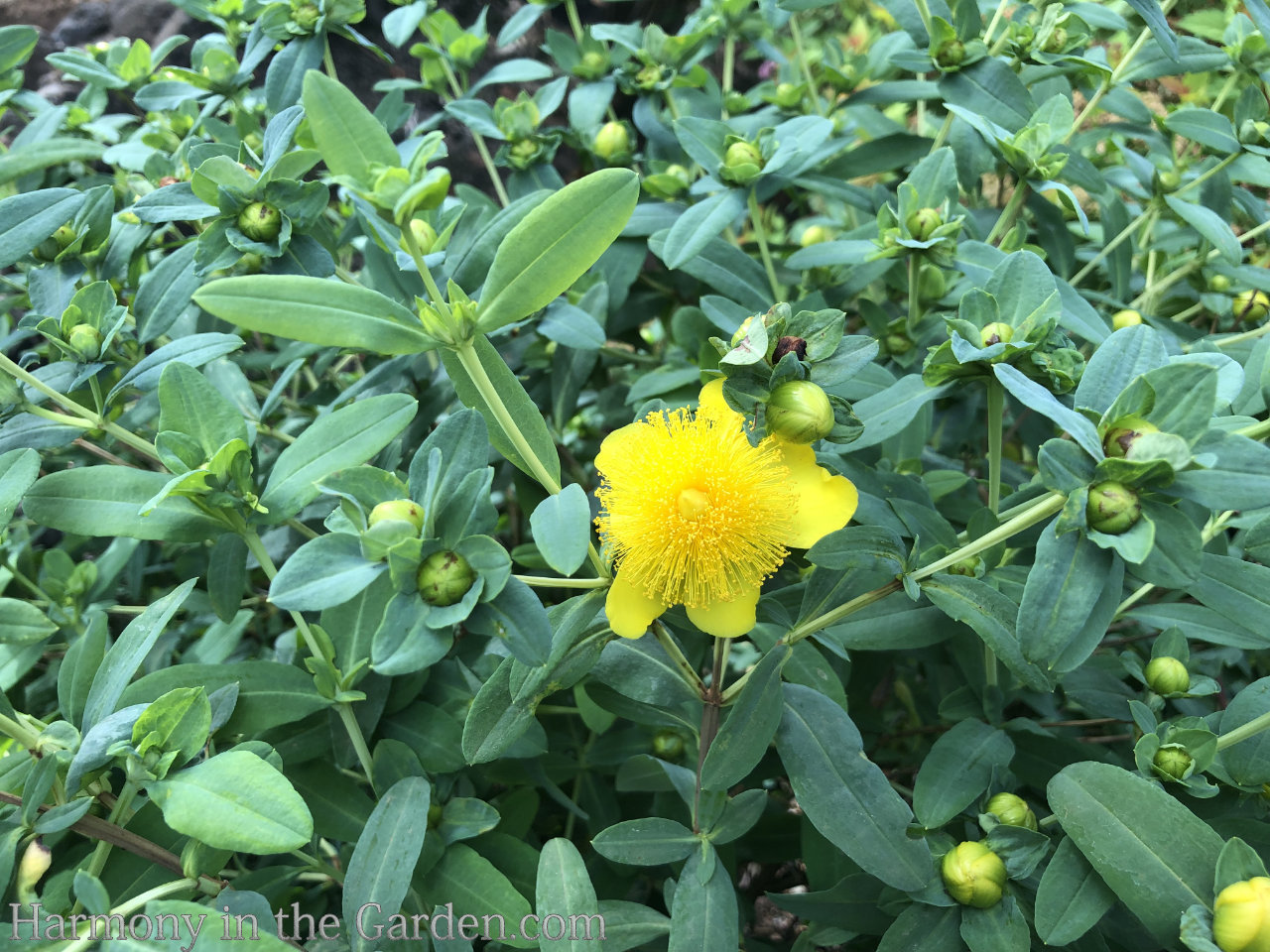
Hypericum ‘Sunburst’ (St. John’s Wort) zones 5-8, Deer-Resistant
‘Sunburst’ is my favorite variety of St. John’s Wort, as its foliage tends to be more glaucous than other varieties.
(What’s glaucous? click here for a list of my favorites.)
The bright yellow flowers live up to its ‘Sunburst’ name, and are a show-stopper when in full bloom.
This is also a more compact variety, topping out at 3’x3.’
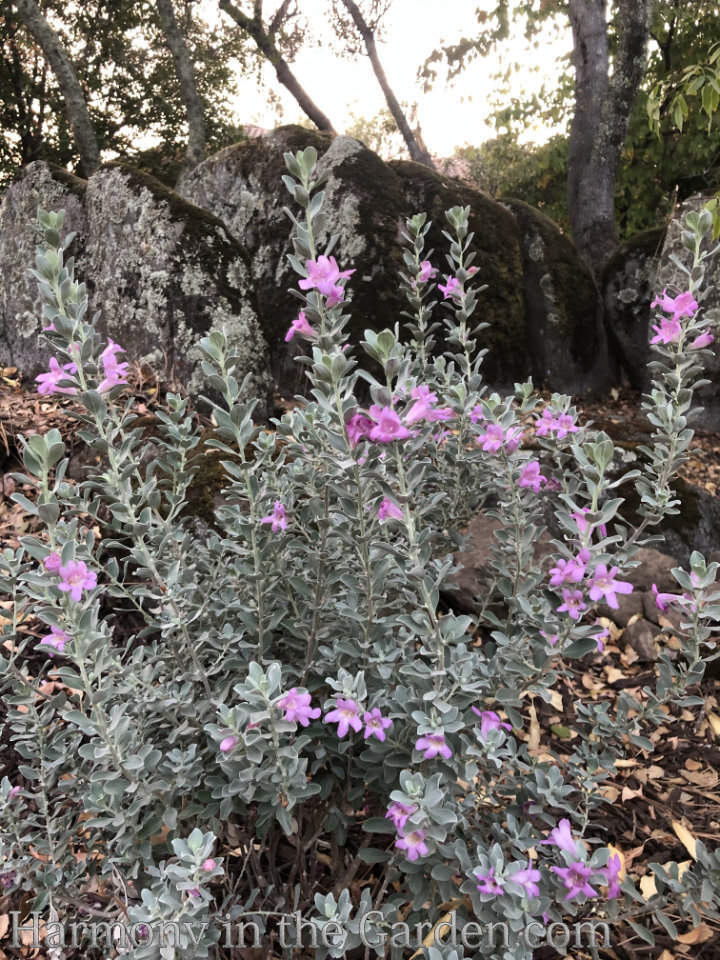
Leucophyllum frutescens ‘Silverado’ (Texas Ranger) zones 8-11 Deer-resistant
This Texas native is another shrub that doesn’t skip a beat in hot climates.
I prefer ‘Silverado’ vs. other varieties as it has a more compact 4’x4′ size, whereas others can quickly become rangy looking with age.
‘Silverado’ has evergreen foliage with tons of vibrant blue/light purple flowers throughout spring, summer, and fall.
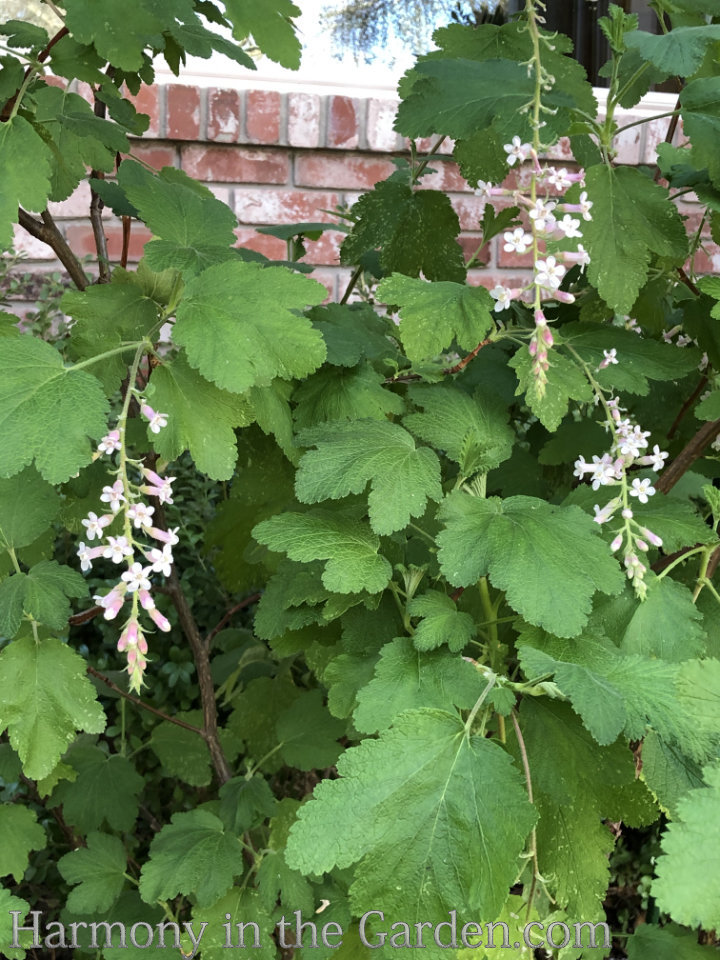
Ribes (Winter Flowering Currants) zones 5-9 Deer-resistant
You may remember I recently wrote about Flowering Currants in this post where I talk about my favorite late-winter flowers.
But, as a recap, my top-2 favorite varieties are ‘Dancing Tassles’ (left) and ‘Claremont’ (below.)
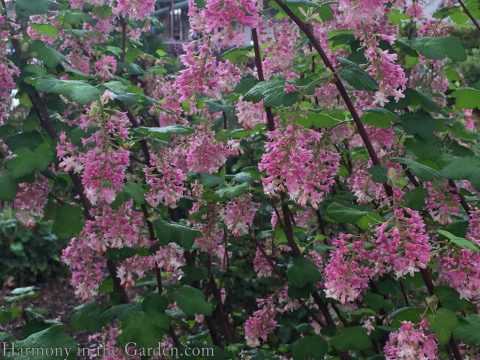
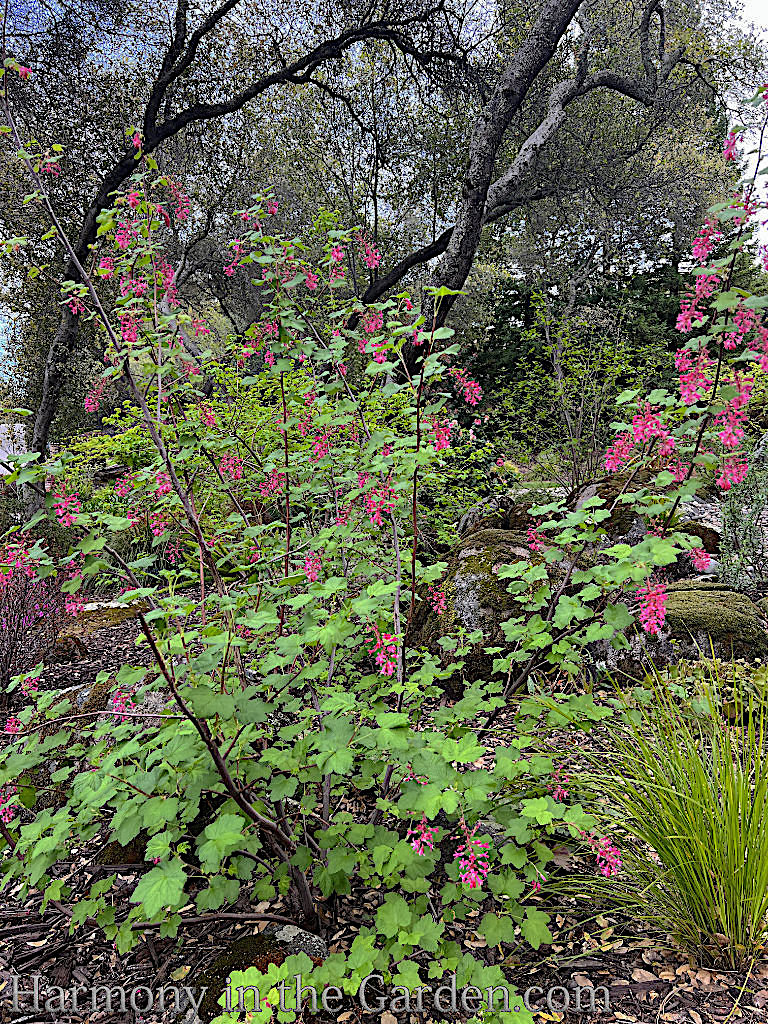
A recent introduction to my garden is ‘King Edward,’ that I purchased through Digging Dog Nursery.
It’s a super-fast grower (this one started out in a quart pot just 1 ½ years ago and is already 4′ tall!)
It has more of an upright form, than the others I’ve mentioned, growing to 7’ x 4’.
The flowers are much darker than the ‘Claremont’ above – more of a dark pink/red color which are a welcome addition to my garden.
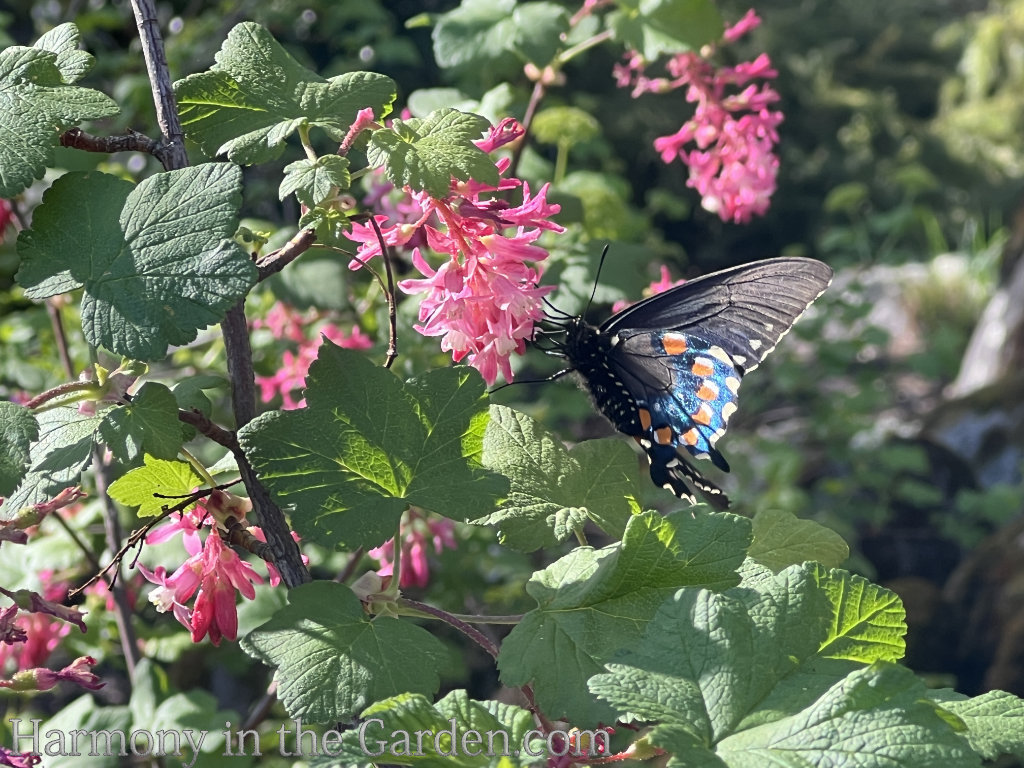
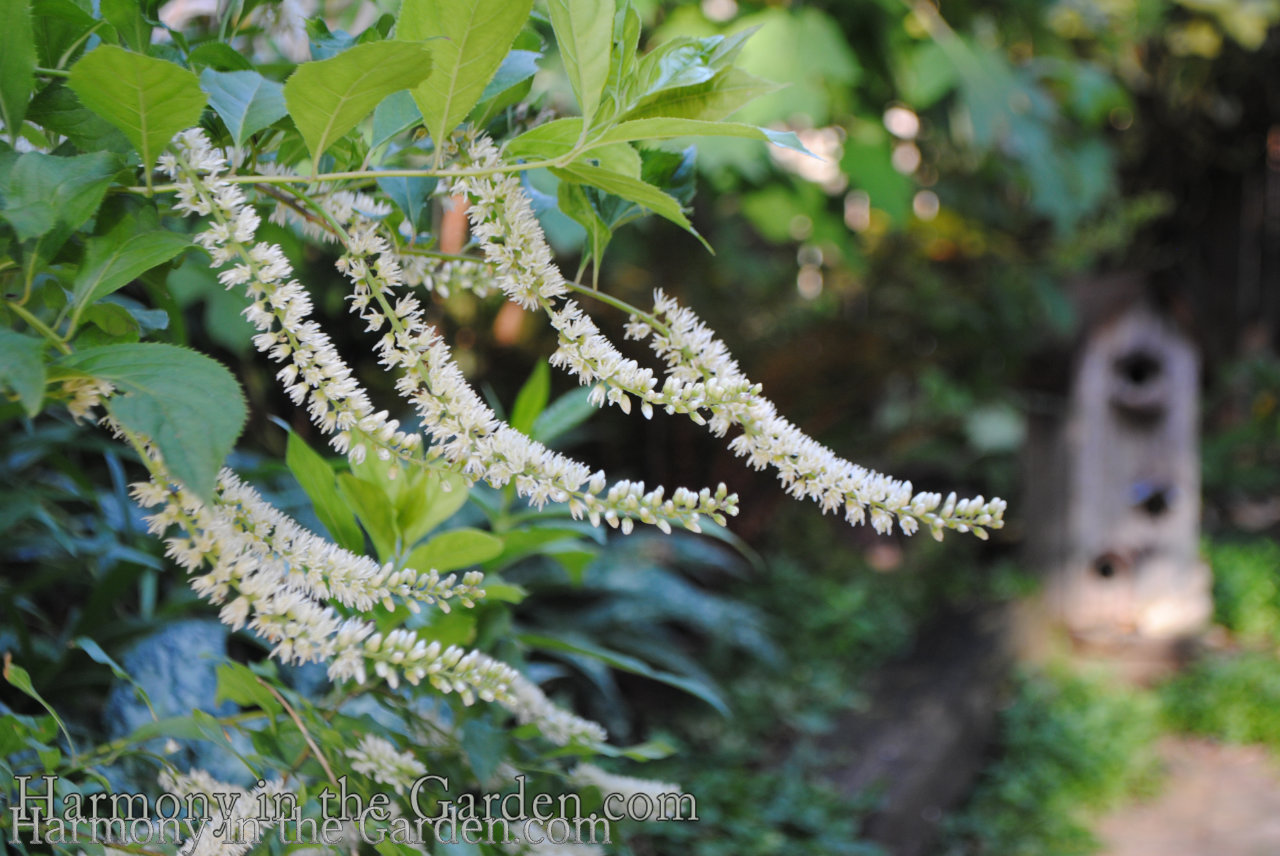
Itea virginica ‘Little Henry’ (Sweetspire) zones 5-9, deer-resistant
This is another east-coast native plant that has performed really, really well in my garden.
Even though it prefers ample moisture, I’ve found it also does really well receiving moderate to low amounts of water in my garden.
‘Little Henry’ is a compact form, reaching 3’x3’ (versus 5’x5’ of other varieties) making it much easier to place in smaller gardens.
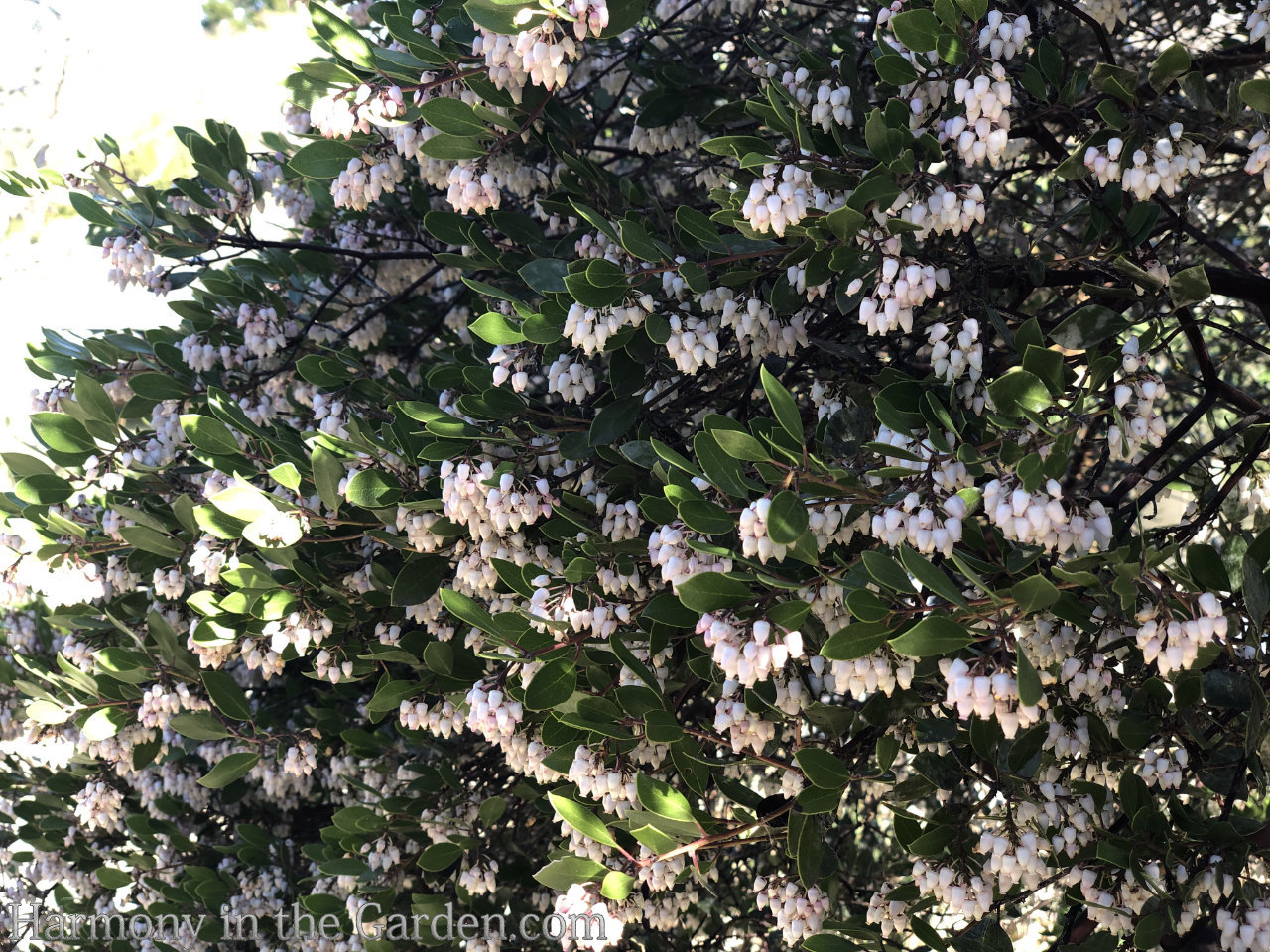
Arctostaphylos ‘Howard McMinn’ (Manzanita) zones 7-9, deer-resistant
I’ve planted ‘Howard McMinn’ in so many gardens over the years, I’ve lost count. This is one of the few manzanitas that thrive in garden-settings that typically offer more water than other manzanitas want.
It’s a moderate-grower, reaching 5’x5’ (sometimes larger, if happy) and prefers in part shade, though I’ve seen them happy in full, blazing sun.
It provides evergreen structure in the garden, as well as profuse soft-pink, bell-shaped blooms in the late winter that hummingbirds adore
PERENNIALS
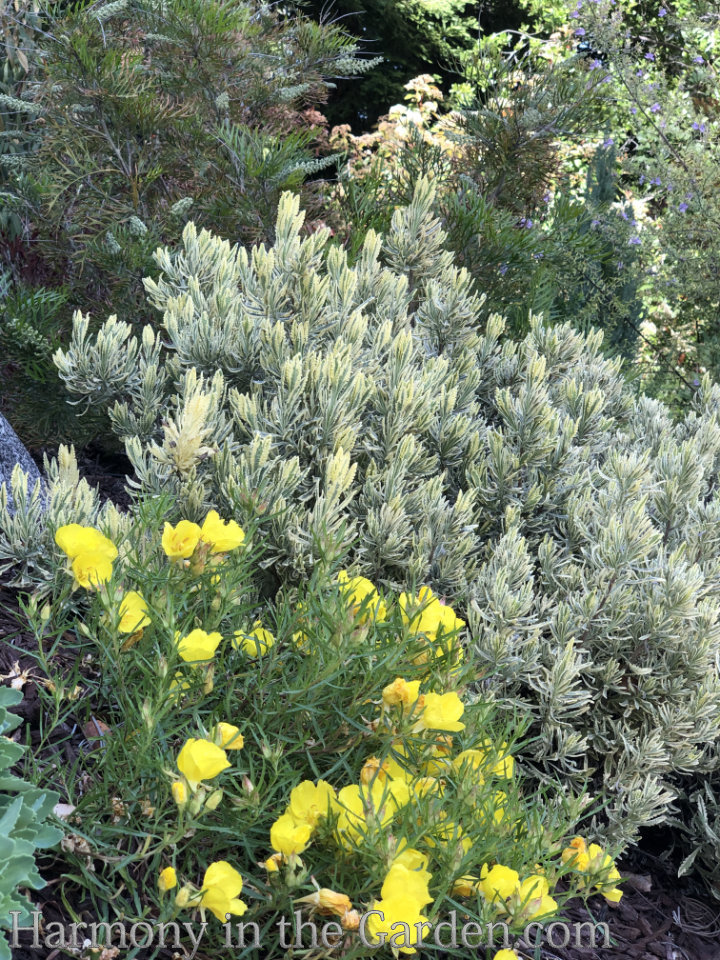
Calylophus hartwegii ‘Texas Gold’, zones 5-9, deer-resistant
This western native is one of the most amazing bee-magnets I’ve ever seen!
I have several planted throughout my garden and some haven’t stopped blooming since last October.
It loves well-drained soil and full sun (even reflected heat!) making it ideal planted next to a hot driveways or on a slope.
The bright yellow cup-shaped flowers, with four paper-thin petals, can be seen across the garden (which probably accounts for every bee in the neighborhood visiting it.)
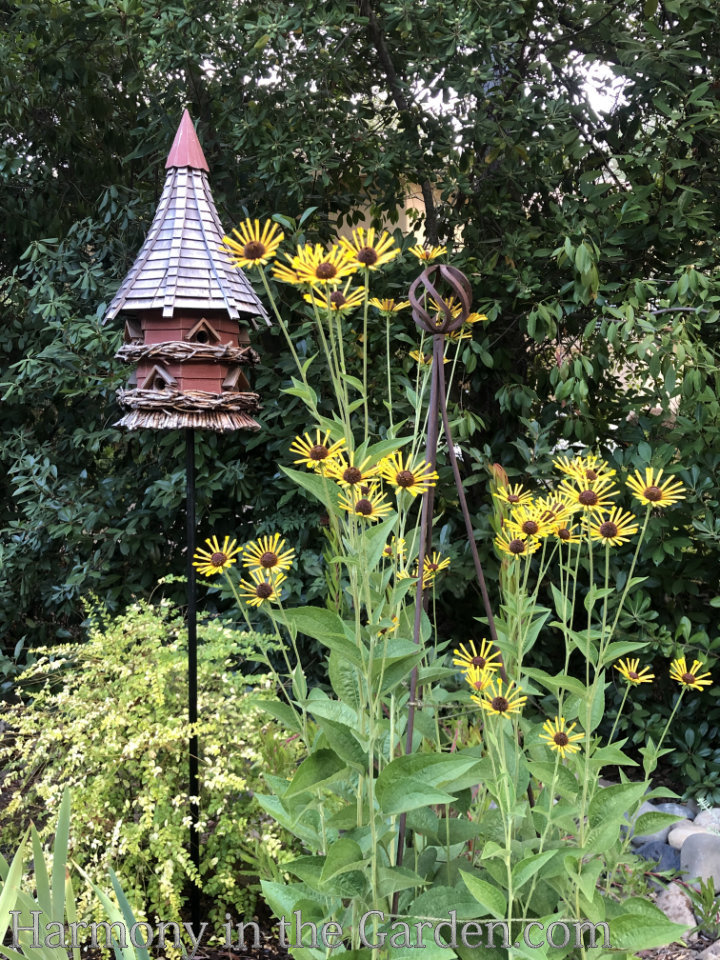
Rudbeckia ‘Henry Eilers’ zones 4-8 deer-resistant
I’m a sucker for prairie plants. Especially if they’re unusually tall (click here for more of my favorite towering plants.)
Which is why when I first spotted this variety at the Bellevue Botanic Garden, I vowed then and there to find some for my own garden.
This is a tall variety, growing to 4-5’, with tons of starry golden-yellow late-summer blooms.
While I’ve never seen them available in local nurseries, I’ve ordered mine from Bluestone Perennials.
Even though the tags say they need moist soil, mine have done really well with medium to low water. I just make sure to provide at least 3-inches of mulch to help retain the moisture.
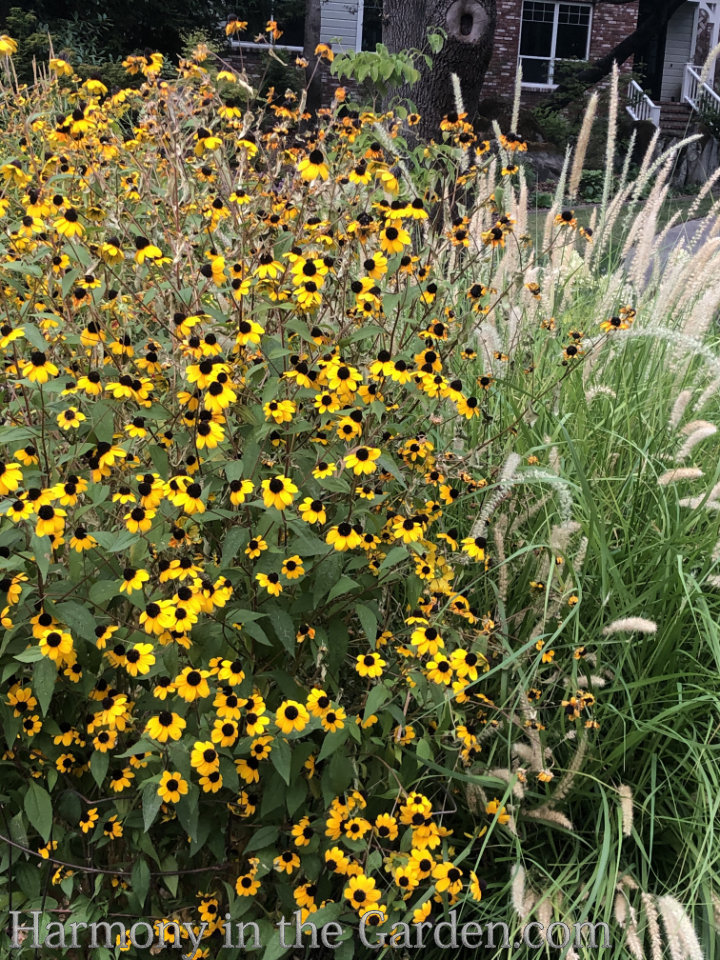
Rudbeckia triloba zones 4-8, deer-resistant
Another prairie plant, this rudbeckia’s flowers are much smaller with a dark brown center.
But what the flowers lack in size, they make up for in quantity.
It begins blooming mid to late-summer, and will be covered with hundreds of blooms all the way through October.
If happy, it will re-seed throughout your garden, which I don’t mind at all as rudbeckias can be short-lived.
And with so many babies sprouting up, I’ll always have plenty to pass along.
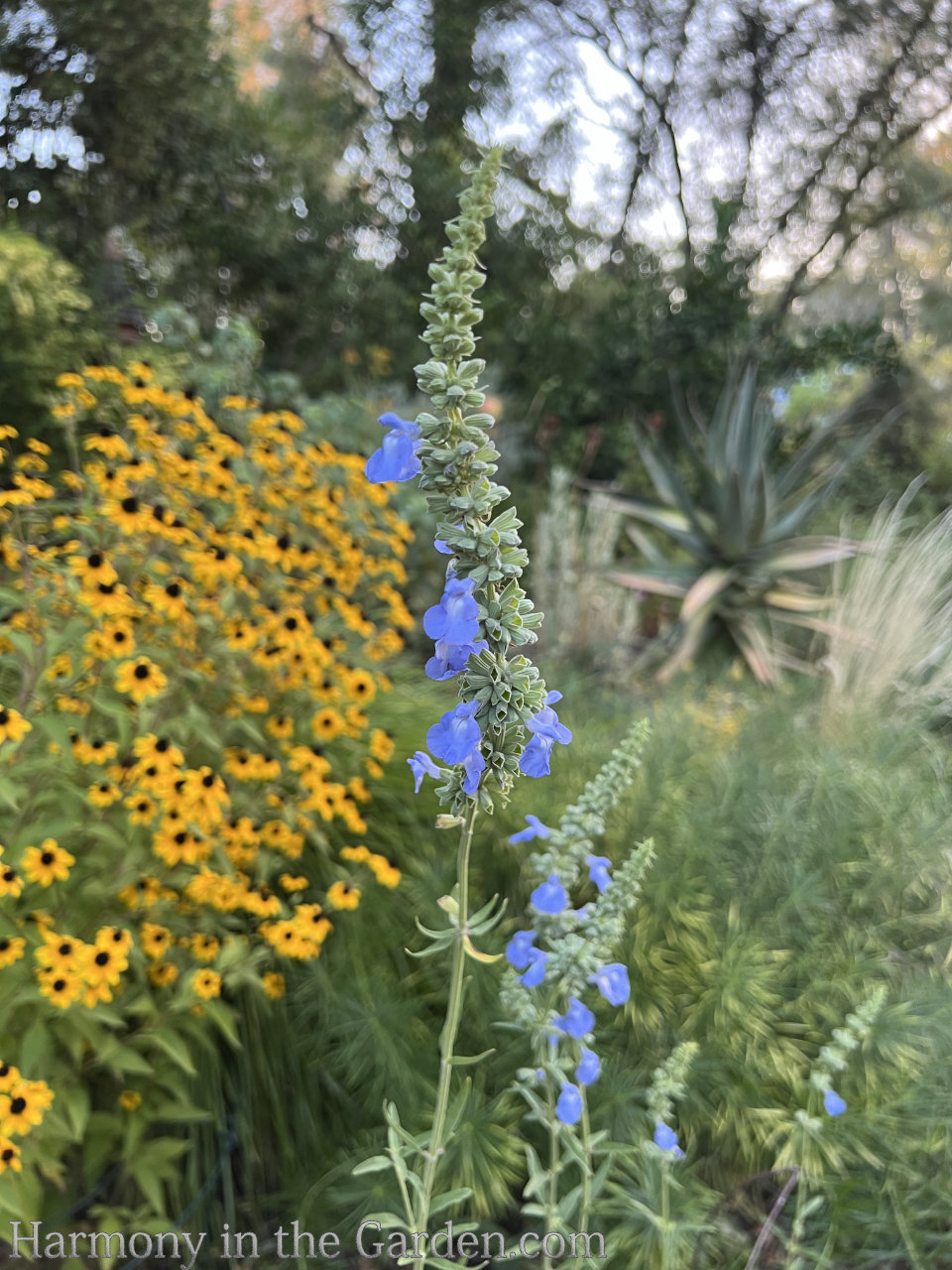
Salvia azurea (Blue Sage)zones 4-9, deer-resistant
Another favorite on-line source is Prairie Nursery, which is where I purchased this tough-as-nails salvia.
In addition to my penchant for prairie plants, I also love anything that’s oversized.
Which is why I just had to have this unusually tall variety of salvia, which grows to 5-feet, and is a summer highlight in my Modified Meadow Garden.
It tends to flop, however, so it will definitely need staking.
But seeing those sky-blue flowers swaying in the back of the border make the hassle of staking the plant worth it.
If you love salvias like I do, click here for my Four Seasons of Salvias article.
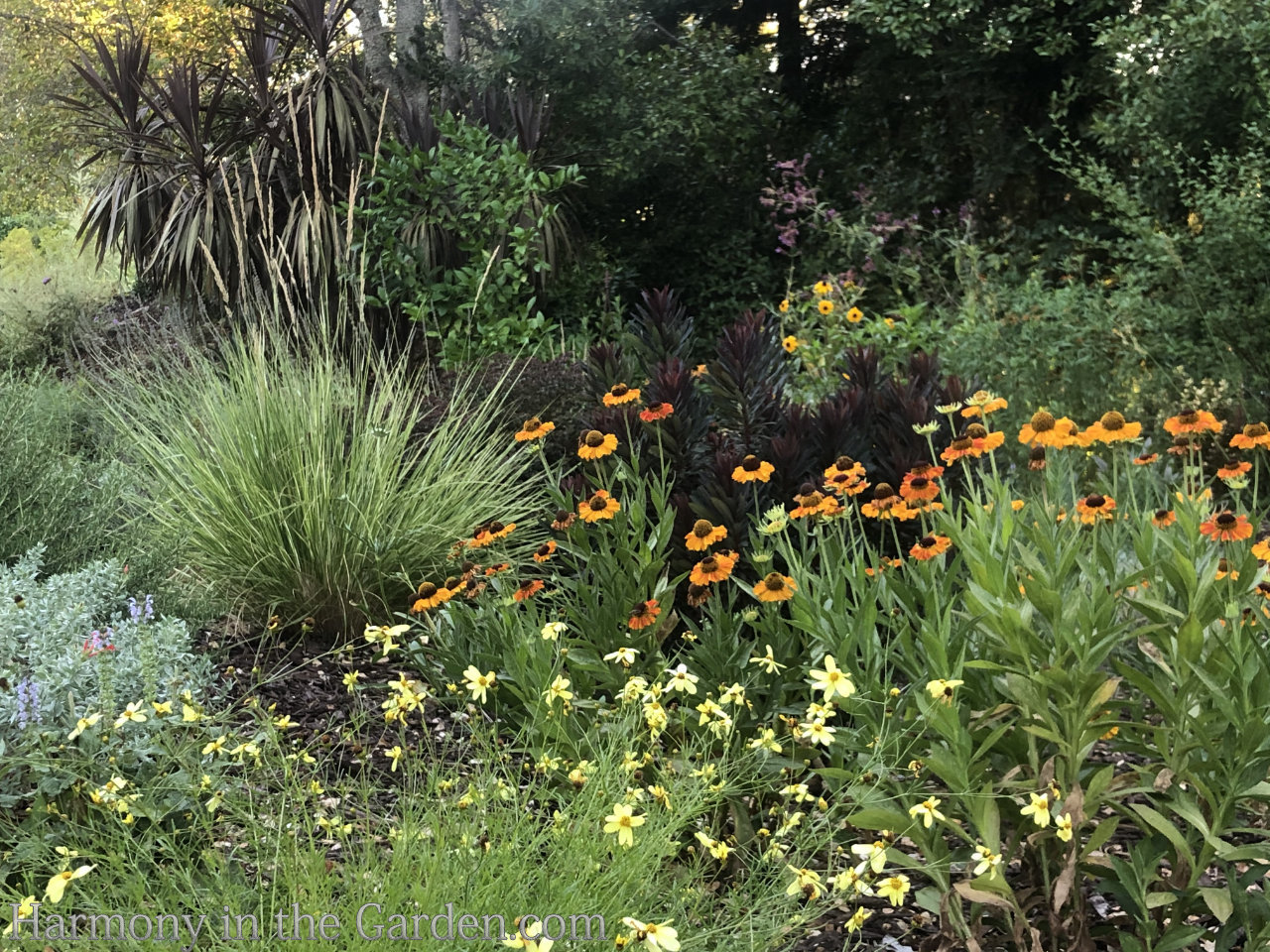
Helenium ‘Short ‘n Sassy’ (Sneezeweed) zones 3-8 deer-resistant
Growing to a tidy 2’x2’, the flowers seem to last much longer than other varieties, blooming from early summer through late fall.
And regarding its dreadful common name of Sneezeweed, rest assured it won’t make you sneeze because of too much pollen. In the old days, some people would crush the dried petals to inhale (like snuff) that would apparently make you sneeze out evil spirits.
I’m NOT making this up!
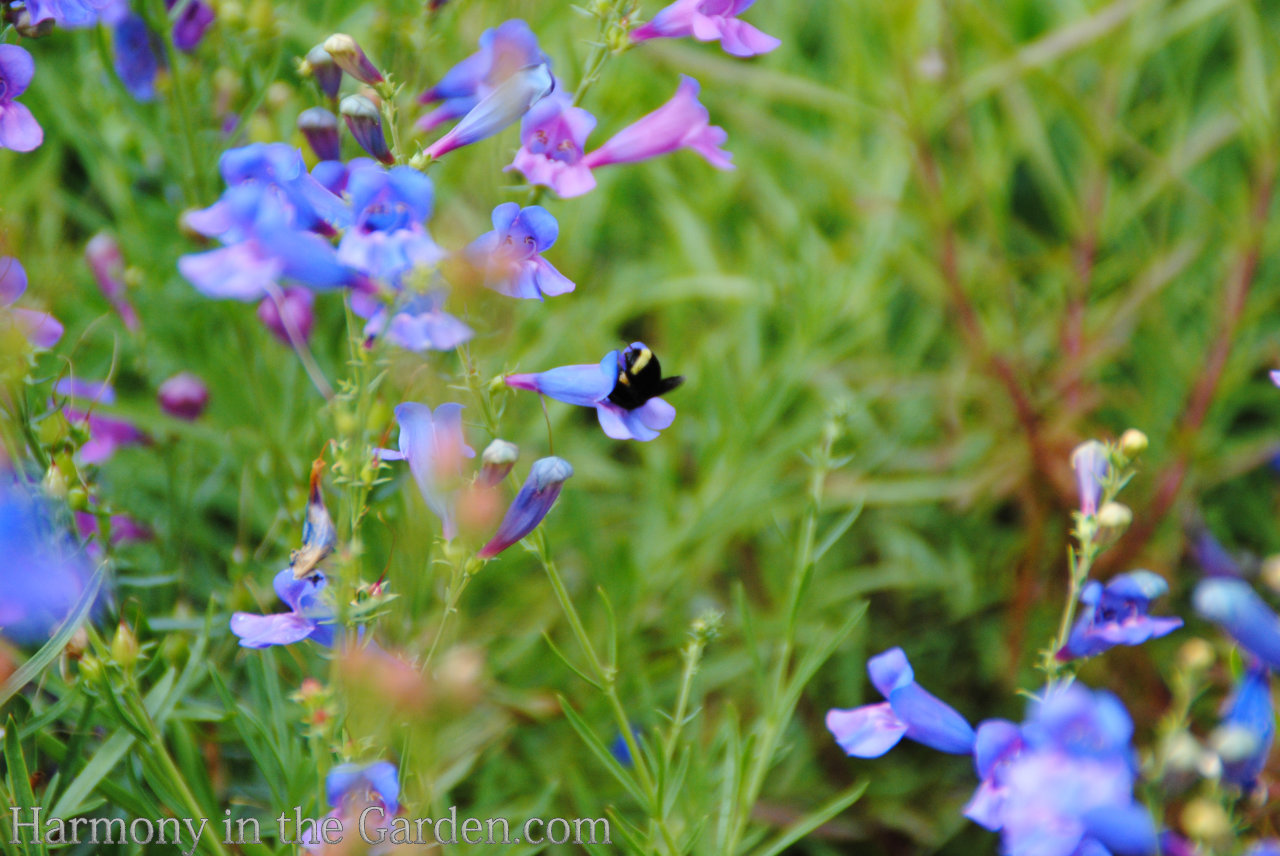
Penstemon heterophyllus ‘Blue Springs’ (Foothill Penstemon) zones 7-10, deer-resistant
‘Blue Springs’ requires very little water once established (in fact, you can easily kill them with too much water.)
It prefers full-sun and rocky soil, and if happy the 14”x14” mound will reward you with the most gorgeous blue-lavender flowers you’ve ever seen.
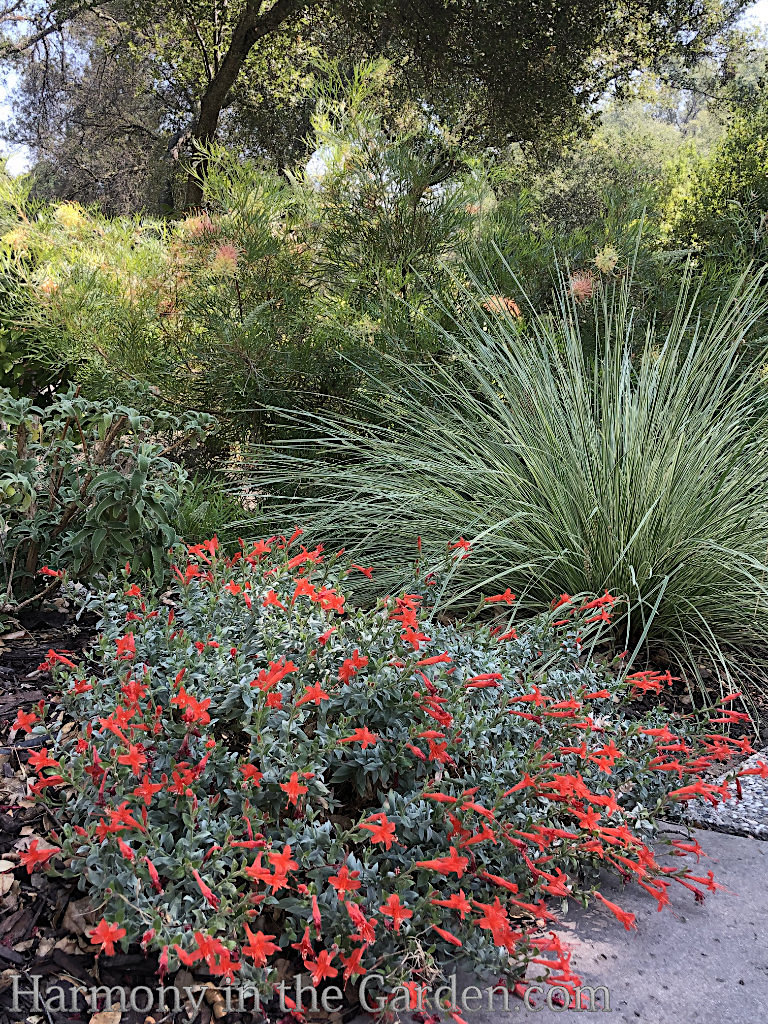
Epilobium canum (aka: Zauschneria) ‘Everett’s Choice’ zones 8-11 deer-resistant
I much prefer ‘Everett’s Choice’ over other California Fuchsias, as its foliage isn’t quite as hot and gray looking as others.
This variety has more of a bluish-gray-green color to it, helping to appear more lush.
It slowly spreads to form a low 12” x 24″ mat, and only requires occasional deep watering.
The vibrant red-orange blooms appear mid summer but really come into their own once late summer hits, lasting all the way through fall.
And of course the tubular flowers are a magnet for hummingbirds and butterflies.

Aster laevis (Smooth Aster) zones 4-8, deer-resistant
Also purchased from Prairie Nursery, this tall and airy aster quickly grows to 3’ on tough stems that won’t easily flop over.
The leaves are smooth to the touch versus other varieties which are rough and crinkly, hence it’s common name of Smooth Aster (see below.)
This is also a host plant for the Pearl Crescent butterfly (which, alas, doesn’t live on the west coast, but hey – maybe if I plant enough they’ll head on over to my garden!)
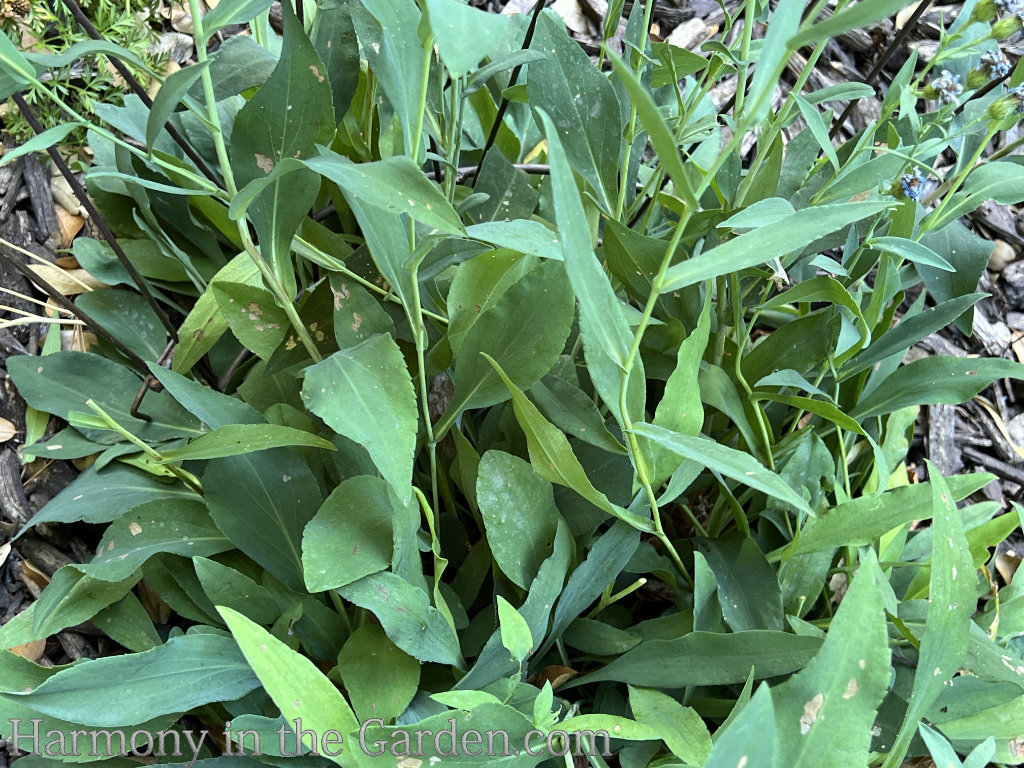
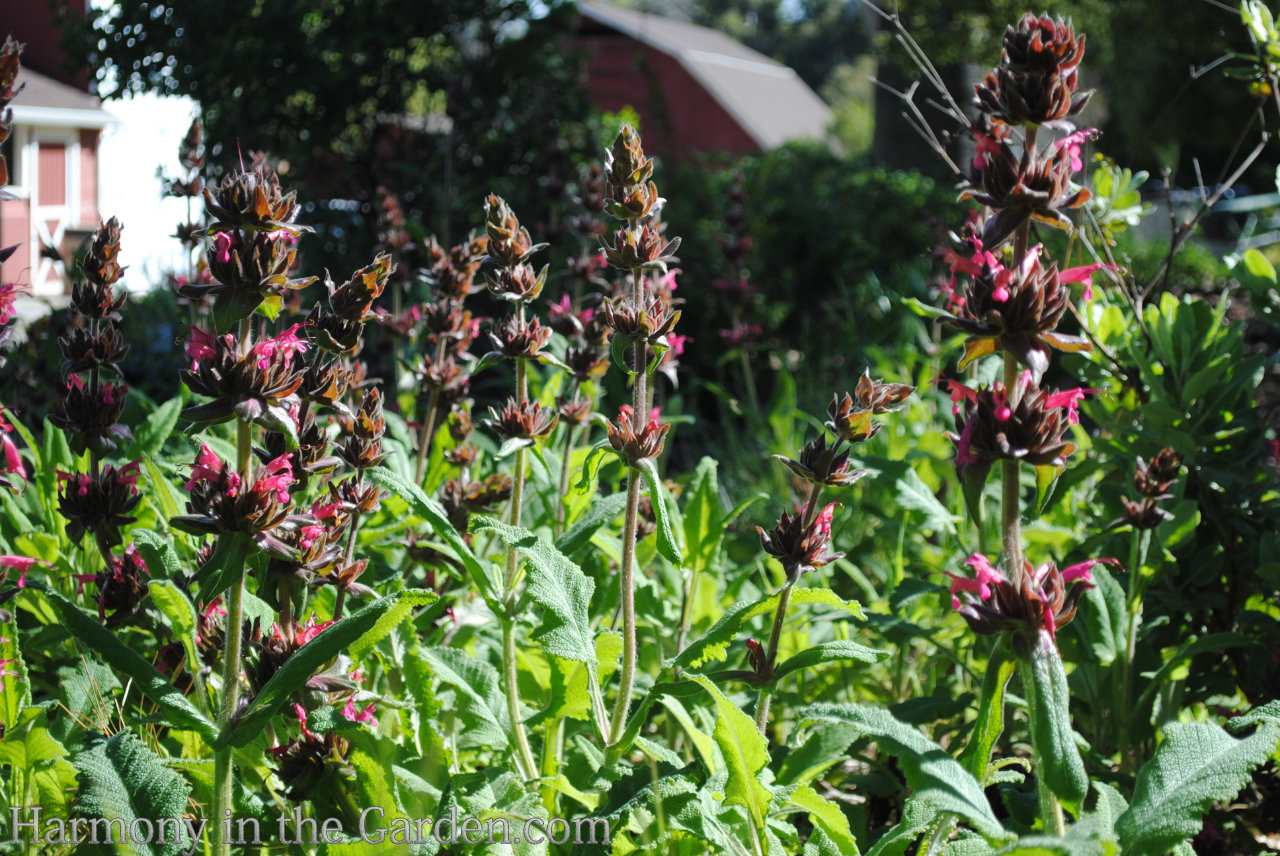
Salvia spathacea (Hummingbird Sage) zones 8-11, deer-resistant
This is the perfect plant for that elusive category – DRY SHADE.
Thriving under oaks, this showy salvia grows 1’-3’ tall, spreading via rhizomes to about 3’-4′.
For more plants that thrive under the oaks in my garden, click here.
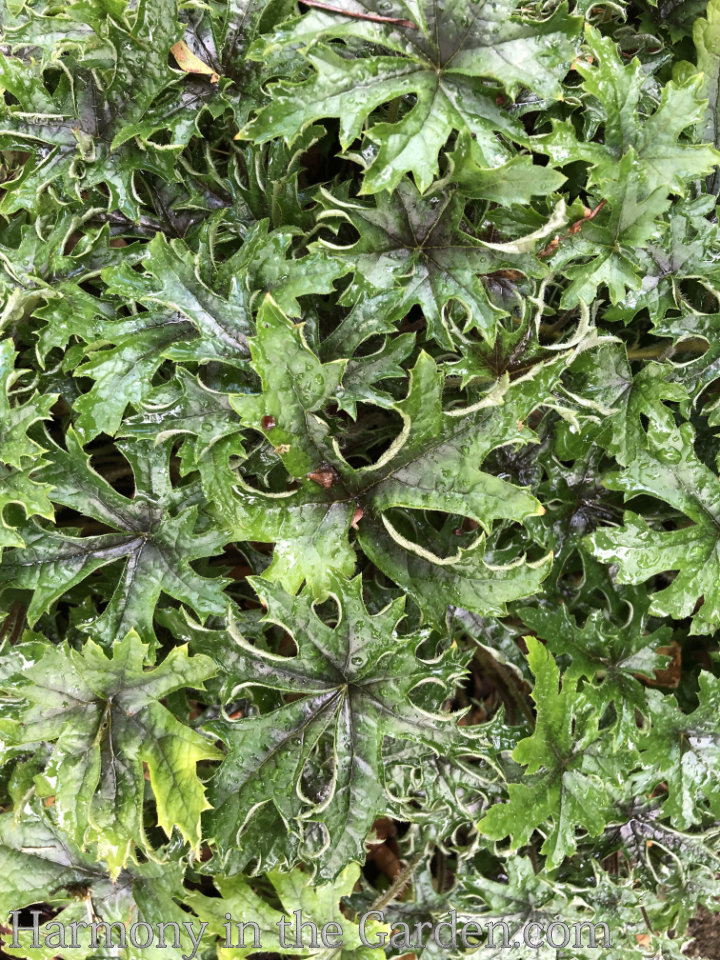
Tiarella ‘Pacific Crest’ zones 4-9, deer-resistant
This is another east-coast native (which usually translates to needing more moisture than my hot, dry California garden!)
Therefore, I have it planted next to a small strip of lawn where it benefits from the overspray. This is another trial plant given to me years ago by Terra Nova Nurseries and one which I absolutely love.
The foliage is amazing even when it isn’t flowering, but the blooms – oh my! Little fuzzy white flowers for weeks at a time.
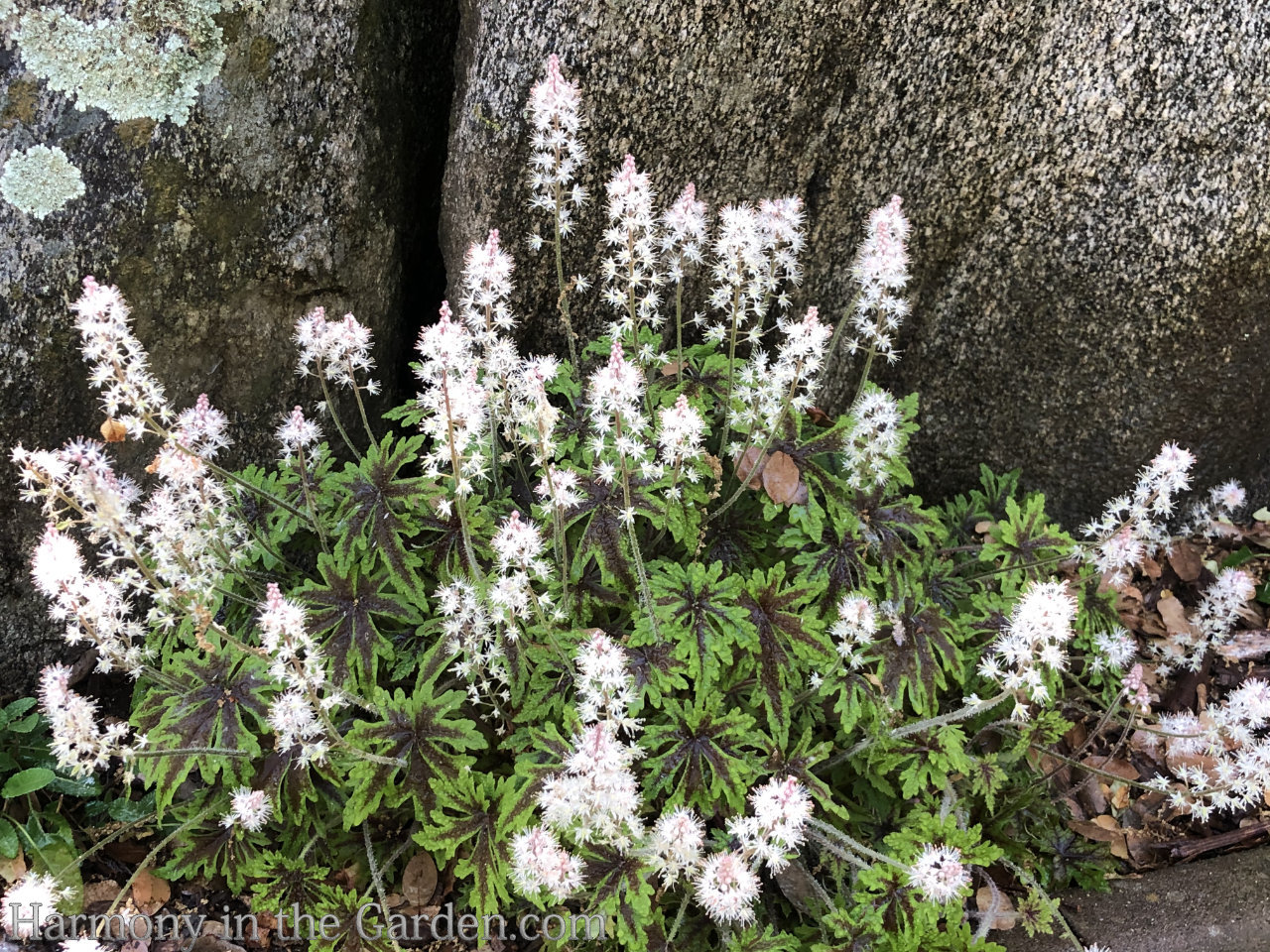
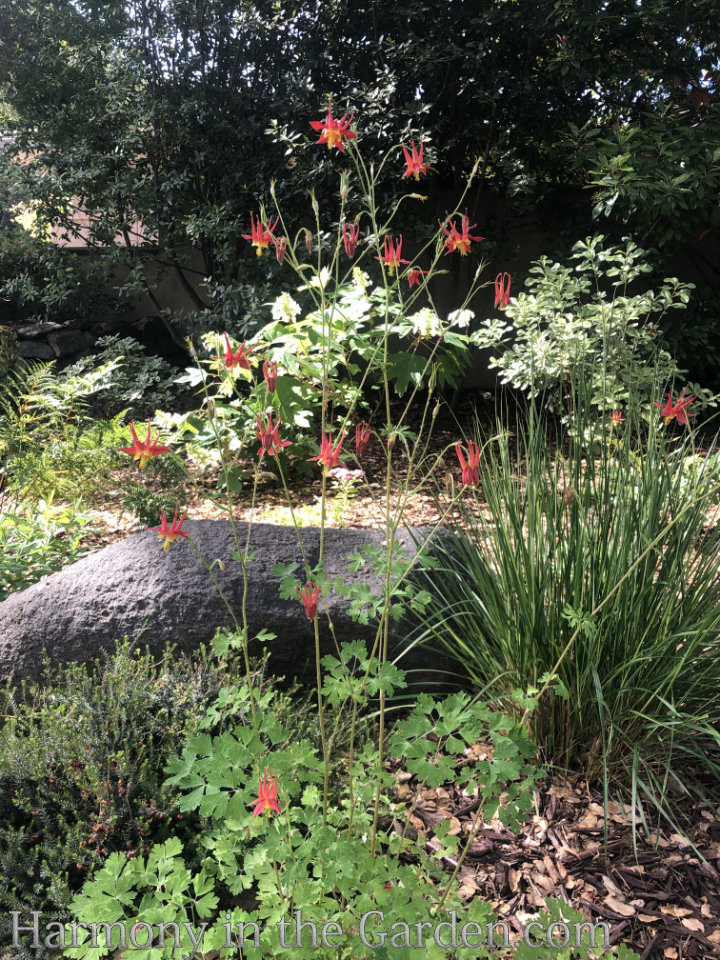
Aquilegia formosa (Western Columbine) zones 3-8, deer-resistant
I absolutely love columbines (they easily top my Top 10 flowers of all-time.)
Growing to 3’x2′, its profuse little red and yellow flowers gently sway on top of long, slender stems while attracting every hummingbird in the neighborhood.
It will re-seed when happy, and I’ve transplanted it throughout the shadier parts of my garden where it continues to thrive with low-to-moderate amount water.
TREES
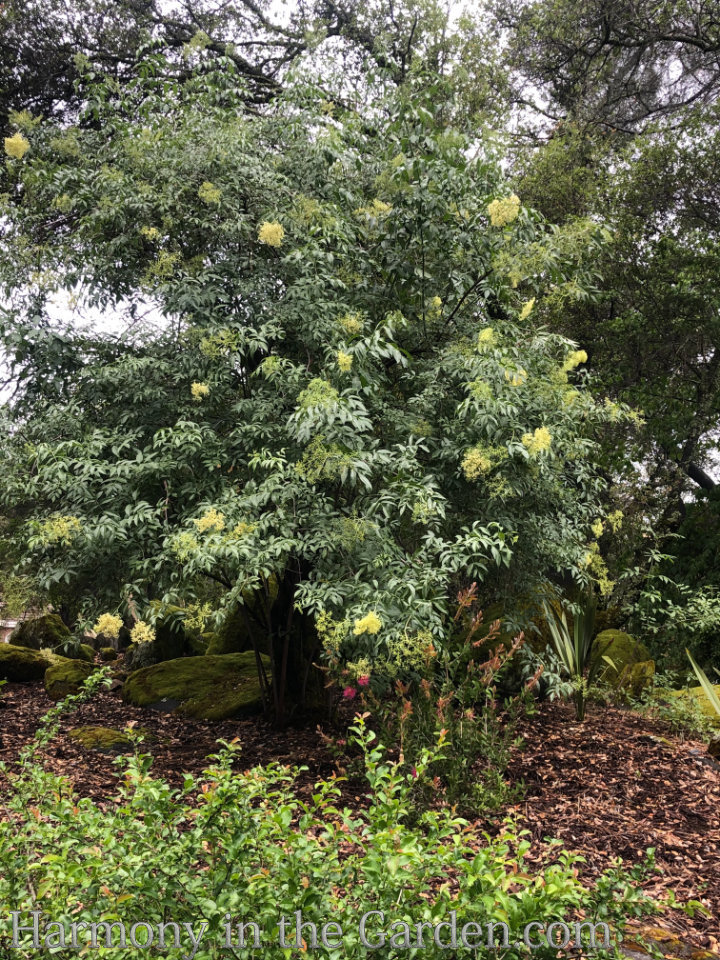
Sambucus mexicana (Elderberry) zones 6-10, deer-resistant
Native to the west coast and parts of Texas, this Elderberry tree was here when I moved in, so it’s fairly old and established.
Mine receives zero additional summer water, so I assume its deep tap roots have struck water somewhere which is what’s keeping it alive.
I love the creamy yellow-white blooms almost as much as the blue-black fall berries.
Click here for a yummy (and easy) elderflower cordial recipe which has been a HUGE hit with my family!
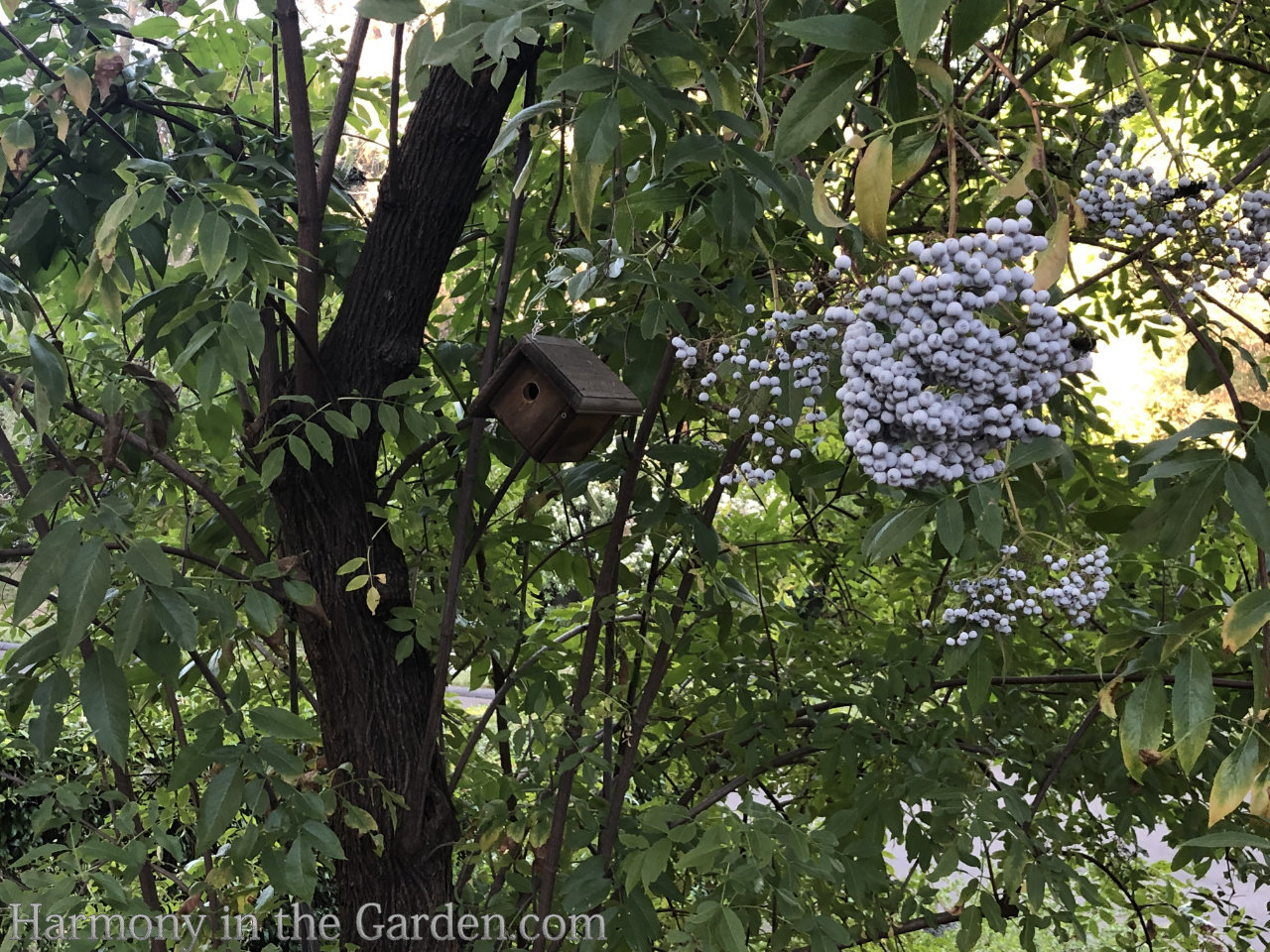
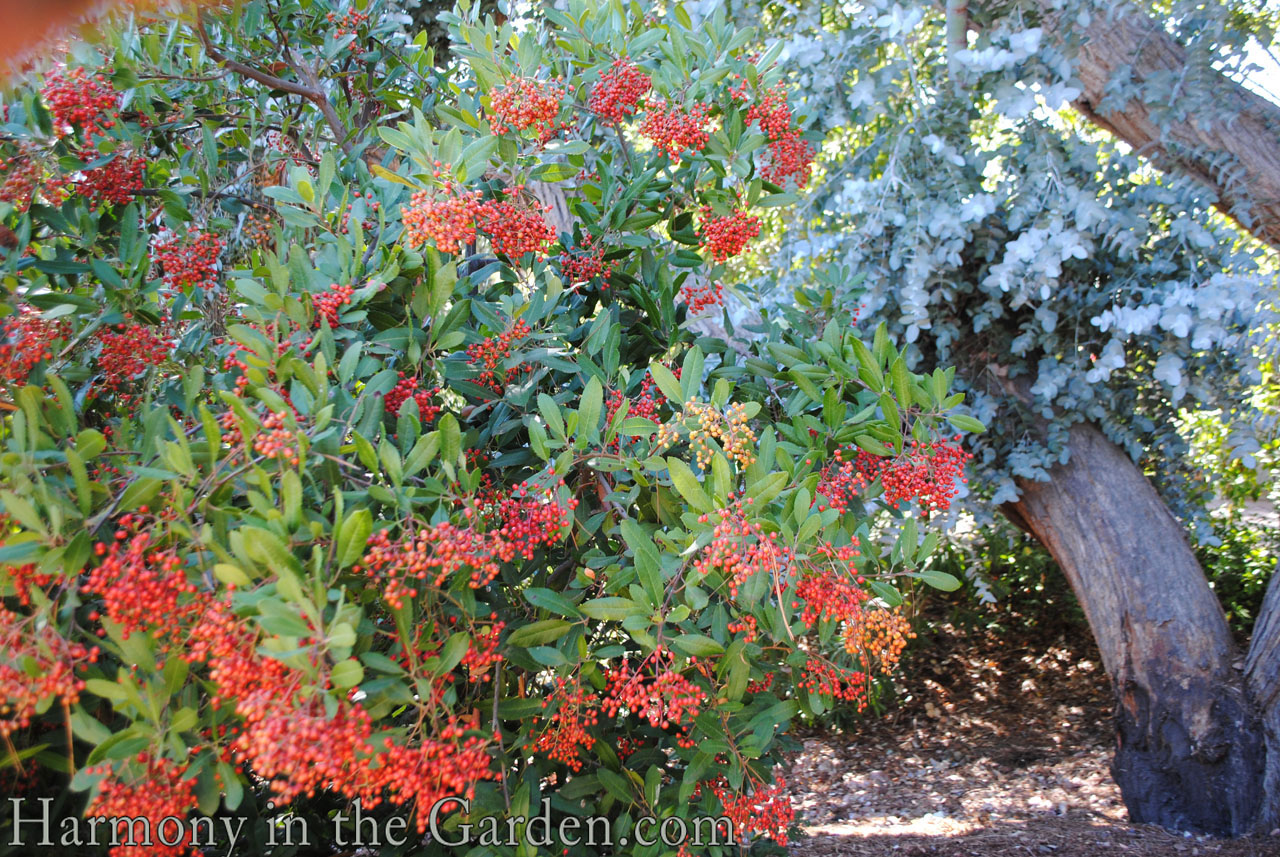
Toyon (Christmas Berry) zones 9-11, deer-resistant
Toyons seem to be one of the most difficult native plants to get established in a garden setting. One reason might be that it loves growing on slopes versus flat areas.
Luckily, mine have established themselves on steep berms in my garden and are quite happy (thank heavens!)
They can easily grow to 15’ tall, or more, which makes them wonderful small trees or evergreen screens.
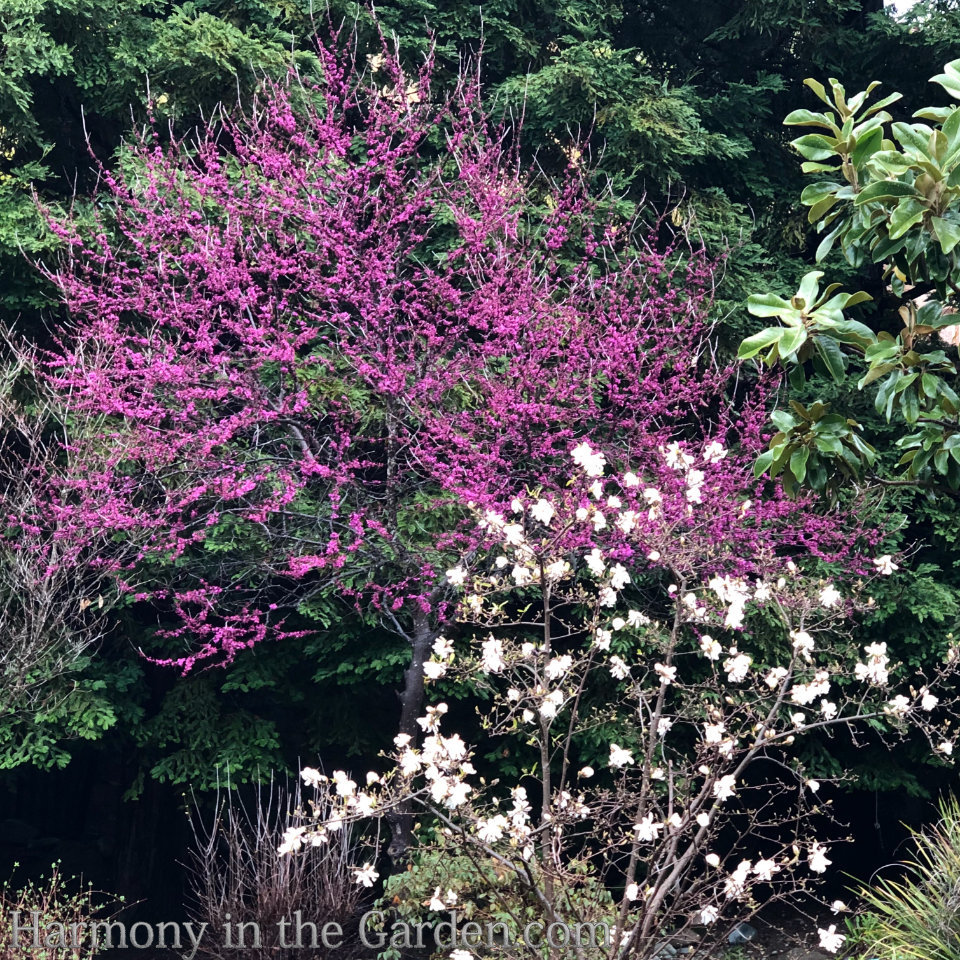
Cercis occidentalis (Western Redbud) zones 7-9, deer-resistant
The Western Redbud is actually a large shrub that can grow into a small 12’ tree. Its tiny magenta-blooms cover bare branches in early spring, and is a show-stopper for anyone not familiar with it.
Here’s another great description of the Redbud by Las Pilitas Nursery.
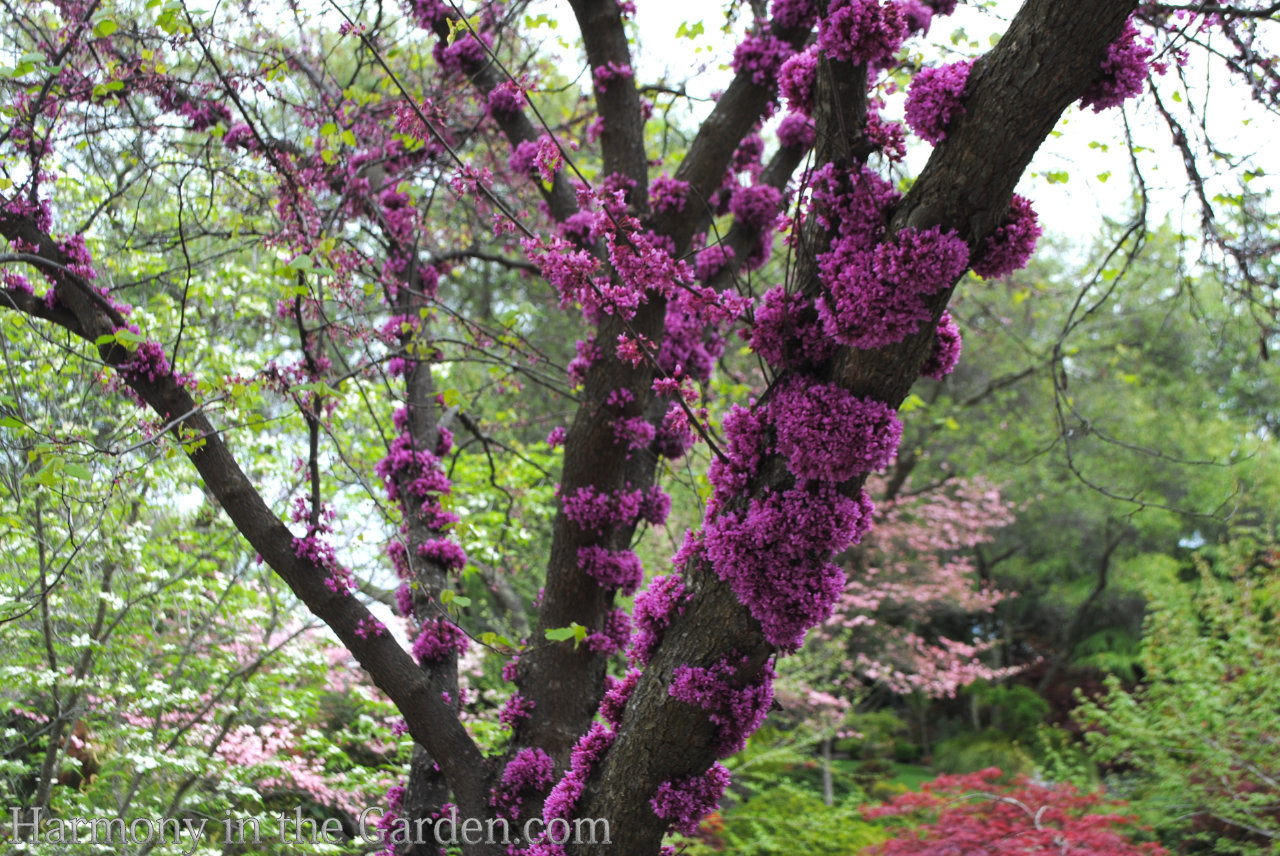
Phew! You made it to the end of this incredibly long post! And to celebrate, here’s some exciting native plant news!
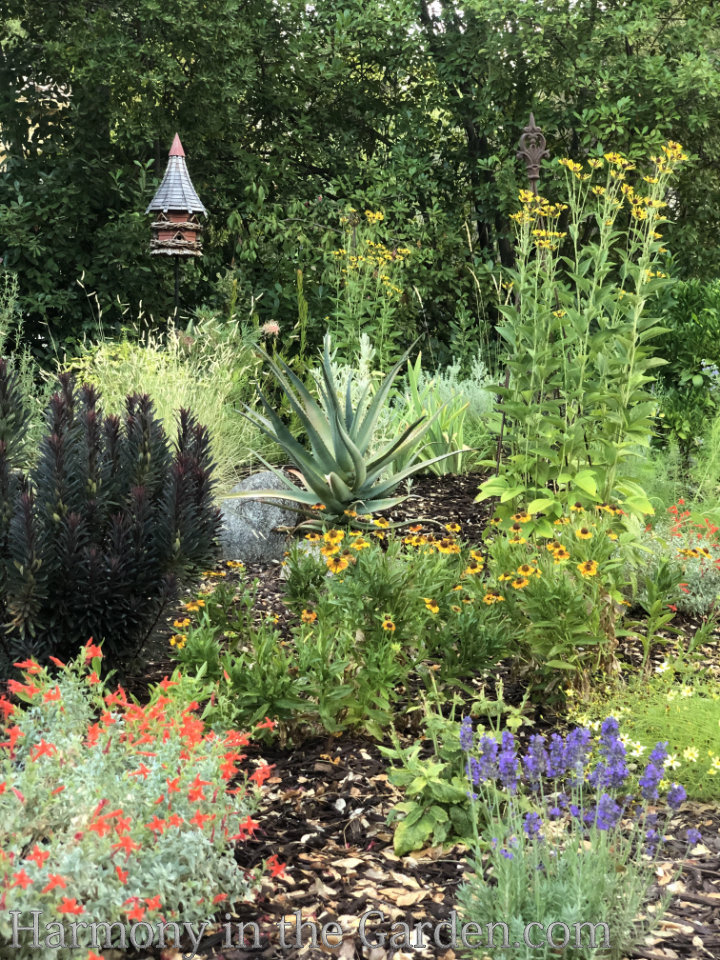
In celebration of California Native Plant Week (the dates for 2025 are April 12-19 check out this fantastic site, which includes tons of information.
On this site you’ll find 360-degree tours of native home-gardens, native nurseries offering special discounts, and free virtual presentations for the entire week!
And if you can’t get enough of native gardens, here’s two favorites of mine that I’ve visited over the years:


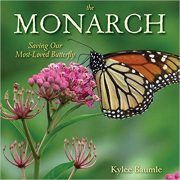
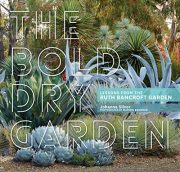

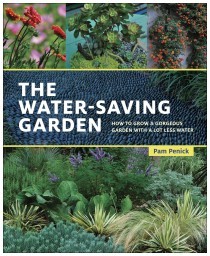
26 Comments
Gardeners in California must LOVE the options and creativity in beautifying yards! That would be a DREAM for me. I live in Wisconsin and do everything I can including starting seeds in February, waiting for my last frost date to pass (June 5th, usually) and pot up favorites to overwinter in the house around September. Gardening is so enjoyable regardless of how long the season is. Still…. gardening in California… 😊🤗💗💗💗
Hi Sue – I definitely appreciate living here and try not to take it for granted. My family home is 2 hours away at Lake Tahoe (zone 6) and our garden there is currently buried under about 4′ of snow, so I can appreciate having to wait what seems like forever to get in the garden to plant. I’m already chomping at the bit to try new plants up there, but like you, I have to wait a few more months. My grandparents lived there year-round for decades, and the entire basement would be turned into a greenlight-filled staging area for her potted geraniums. I remember the humid, wonderful smell of ‘green’, which I’m sure helped ignite my love for gardening. 🙂
I attempted to only plant natives at our Lake Tahoe home such as Western Service Berry and the wonderful light and delicate strawberry tasting, easily digested Thimble berry. We had wild Hops growing on the West side of the house which were looked forward to each spring and enjoyed all summer and into the fall. The flowers seemed uneasy to digest; however, I did try. They creeped from the Master bedroom all along the West side over to the kitchen. Large hand sized leaves. I always looked forward to the alders at the beach when the Ruby Crowned Kinglets would carefully investigate each branch for minuscule bugs. Upon successful discovery their crown would open up revealing their brilliant blood red fold.
Hi Gordy – We also have Thimbleberry planted in our Tahoe garden and while ours don’t produce much fruit (yet!) they’re certainly delicate tasting. They’re one of my favorite native plants. i haven’t seen the wild hops up there but will have to hunt them down. Lucky you to have spotted the kinglets – I heard them throughout the summer, but rarely see them.
Just found your blog. Loved the article about natives. I live at about 3800’ elevation CA foothills. Not only do I need deer resistant plants but found the wild turkeys like to peck my irises. Also most areas are shaded so like to see descriptions given that include the designations for heavy shade, light shade, morning sun and full sun along with water needs. I am looking forward to reading more of your blogs.
Carolyn
Hello Carolyn, and welcome to my blog! I’m so glad you’re enjoying it and hope you continue to find inspiration for your garden – it sounds like we’re not too far from one another, so I can relate to those turkeys. Though, I seem to be pretty lucky as they haven’t done much damage in my garden (knock on wood!)
I must have erased my reply. Your natives article is great. I need to put in a couple in my garden, and even though they are deer resistant, I question the little rabbits that are fast becoming a pest.
I thoroughly enjoy your wonderful and informative newsletter. Thank you Rebecca.
Jean Gillette
Hello Jean, so nice to hear from you! Oh, those cute little rabbits are certainly a pest, aren’t they? Unfortunately they seem to eat almost anything, including many deer-resistant plants. I’m so sorry you’re having to deal with them in your garden. 🙁
I really enjoy your blog in general and this post in particular was a great read. I think there’s a typo in the name of the beautiful penstemon you listed, which is correctly spelled Penstemon heterophyllus ‘Blue Springs’ – which I am now off to buy at a nearby nursery! 😉
Yikes – thanks for the catch, Jennifer! (love your email, btw!) I hope you enjoy that gorgeous penstemon as much as I do! 🙂
Great list of plants Rebecca! Definitely time for me to adapt my English garden to more climate appropriate plants – well at least in some areas! Thank you for the encouragement. If the Tanners can do it so can I!
Barbara
Hi Barbara! When working in the garden and facing a daunting task, my husband will often say ‘What Would Freeland Do?‘ – the Tanners are our horticultural heroes and your ‘if the Tanners can do it so can I’ are words to live by. They’re some of the hardest working gardeners I’ve ever met so whenever I’m feeling pooped out, I think about them and carry on!
Hi Rebecca,
Great article, and some of my favorite plants are featured. Yes, very hot here too this weekend. We have redesigned many parts of our garden since you were here, (and after 30 years of being here, changes were needed and of course the opportunities for new favorite plants to be featured). Climate is changing and wise water use even more important!
I can’t wait to see your ‘new’ garden, Sabrina! I have no doubt it looks just as amazing as before. Isn’t it fun to mix things up a bit? Especially when you get to try new plants and they’re water wise, to boot! Sending all my love xoxo
Hi Rebecca,
I am thinking your new 3 year old garden must be large to hold so much too. Every time I am thinking of moving to a place with a smaller yard I receive Harmony in the Garden and my interest is revived. And I have to tell you I finally “bit the bullet” and went back to overhead watering in my backyard garden removing all that Roxy did in terms of drip, cloth for weeds and gopher cages. And I think I am going to save on water in the long run because I have more heads which means everything gets watered and I don’t have to water as much. We have been in this house for 47 years and this is the 4th backyard facelift. I am so enjoying being in the garden as well as looking at it from the windows in my house.
Thanks for all of your inspiration. This newsletter was terrific. I have already put some of these natives in my cutting garden and now I have more ideas. Happy Spring and Summer to you.
Hi Sylvia, my garden is almost an acre and when I moved in there were very few plants so I’ve been lucky (crazy?) to have so much space in which to plant my favorites and those that I’ve always wanted to try. I’m so sorry your garden has needed another facelift but am hopeful that the new irrigation will make your life easier (while using less water – perfect!) I think I heard that Roxy is retiring, btw (sounds good to me right about now!) I’m so happy your garden continues to give you so much happiness and am hoping you have a beautiful (and not too hot) spring! It was 88 degrees here today – much too hot for this early in the year – afraid for what’s in store for me this summer!!!
Terrific article, thank you! What is the name of the plant with the yellow flowers that is pictured next to the Bush Anemone?
Hi Courtney – glad you enjoyed the article today! The yellow flowers are phlomis russeliana (Jerusalem Sage, which isn’t a sage at all….) and it’s one of my favorite varieties as it’s low-water, deer-resistant,has those big velvet-y leaves and beautiful spires of yellow flowers in the spring. This variety can take partial shade, as well.
Oh yay!! Native plants!! There are so many lovely ones to choose from it can be very hard to decide!! 4 of my favorites that are easy and reliable in my San Mateo garden are Western Mock Orange (Philadelphus), Pacific Coast Iris, Salvia clevlandii (especially Winifred Gillman) and Mendocino Leafy Reed Grass (Calamagrostis). It’s wonderful that these days it’s so much easier to find all of these (and many more CA natives) in the nurseries. I don’t have problems with deer (wish I did!!), so I am able to use more natives without worrying about ‘the smorgasbord effects when selecting plants.
Thank you for showcasing these plants and introducing us to other lovely prairie and east coast native plants for our gardens! So fun!!
I’m glad you enjoyed this post, Ronnie. I had to pare it down as I had about 15 others ready to write about, but I was afraid it would be WAY too long for people to read! I have a philadelphus ‘Belle Etoile’ and I didn’t realize it was a native – thanks for letting me know! I have a few calamagrostis foliosa that I would’ve mentioned, but I’ll be writing about the grasses in my garden soon so I left them out. I used to have the ‘Winifred Gilman’ and completely forgot about that – thanks for reminding me. Now I just need to find another sunny spot for it! You’re not helping my addiction one bit…. 😉
Really enjoyed this one! Thank you!
You’re welcome, Diane!
Your garden must be beautiful (and large)!
Thank you, Judith – it’s a work in progress but it’s looking pretty nice after the 3rd year. It’s just under an acre, with very few existing plants when I moved in, so I was given a blank slate when I moved here. I’ve been like a kid in a candy shop, getting to try everything I’ve wanted to that would’ve been too large for my previous garden that was 1/4 the size.
What a resource! Thanks. Can’t wait to try several of these.
Whichever you try, I hope they’re beautiful additions to your garden, Judy!